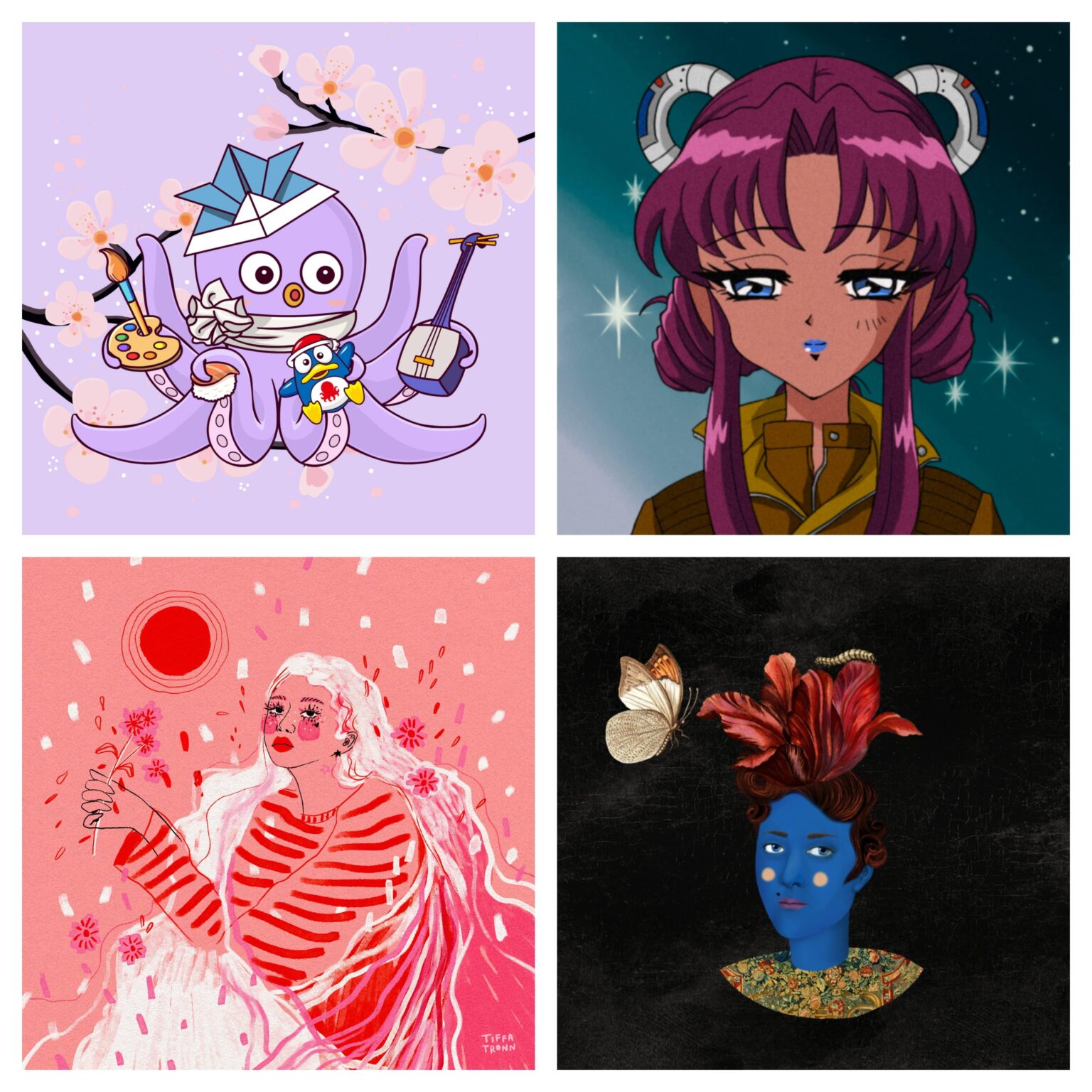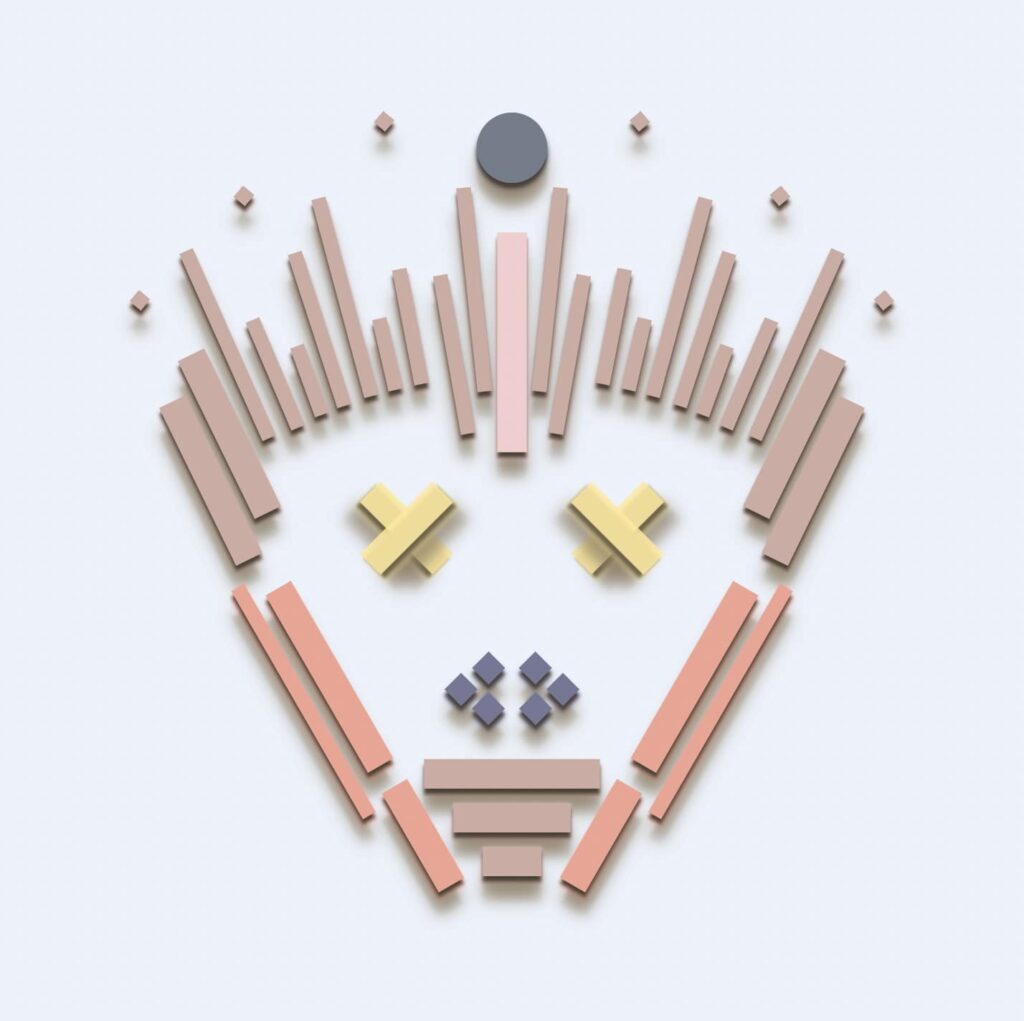Preface
Are you intrigued by the world of digital collectibles but unsure where to start? You’re not alone.
In the past, the creation of digital collectibles was a niche pursuit, known only to a small group of tech-savvy individuals. However, in recent years, the popularity of these virtual items has exploded, with 2021-2022 seeing the greatest growth in user numbers and spending since their inception. As a result, companies and startups have rushed to enter the market, leading to a surge in VC funding. Some of the most successful and innovative collections have generated millions or even billions of dollars in sales.
So what is it that has Silicon Valley so excited? And why are people increasingly buying, selling, and collecting these purely digital items?
Well strap in, because In this article we’re going to explore all you need to know about digital collectibles.
What Are Digital Collectibles?
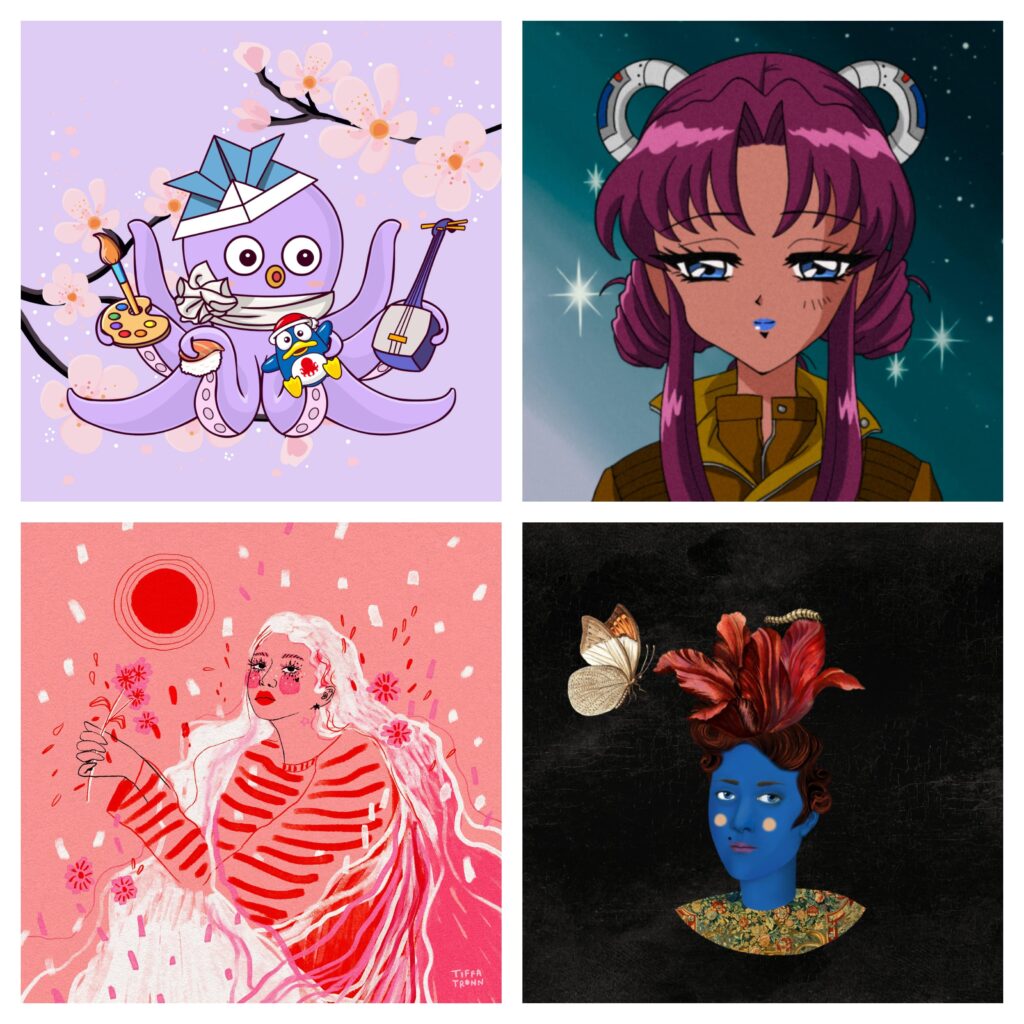
Digital collectibles are unique items which reside on a secure, transparent, and decentralized public ledger known as a blockchain. The blockchain powers the creation and exchange of said unique items, which may appear as art, music, photos, video, memes, tweets, or more.
That same blockchain technology keeps an immutable record of the owner of every item, as well as every transaction ever made.
What Is Decentralization?
Digital collectibles are decentralized assets that operate without the need for a central authority. This means that they are not controlled by any specific person, business, bank, or government. Therefore, decentralized assets typically give you much greater control over them.
In practical terms, this means that your digital collectibles offer a level of security and ownership that traditional digital items do not. For example, when you buy a digital game, you are essentially only purchasing a a temporary license to use it. This means that the publisher has the power to end support for the game at any time, rendering all of your time and money invested in it worthless. Similarly, any digital items you purchased within a centralized ecosystem, such as the game’s servers, are also at the mercy of the publisher and the whims of their support. And all of those cool items you bought? They’re now useless.
In contrast, decentralized digital collectibles are owned by you and are not subject to those risks. This means that the cool items you bought may retain their value and can be traded or sold at your leisure.
Digital Ownership
As we just established, unlike physical collectibles or assets that are not on a blockchain, digital collectibles give the owner more control over their digital assets. These assets can be bought or sold on a variety of marketplaces at the owner’s discretion, rather than locked into one particular ecosystem.
Additionally, many digital collectible collections give the owner of the asset permission to use it as they see fit. Want to put your Curious Addy on a shirt, or in the children’s book you’re making? Go for it. Care to drop it into that indie game you’ve been working on? You have our blessing. This shift towards democratizing the internet and intellectual property is groundbreaking, and digital collectibles are at the forefront of this movement, challenging us to reconsider how we think about and value digital ownership.
Are Digital Collectibles NFTs?
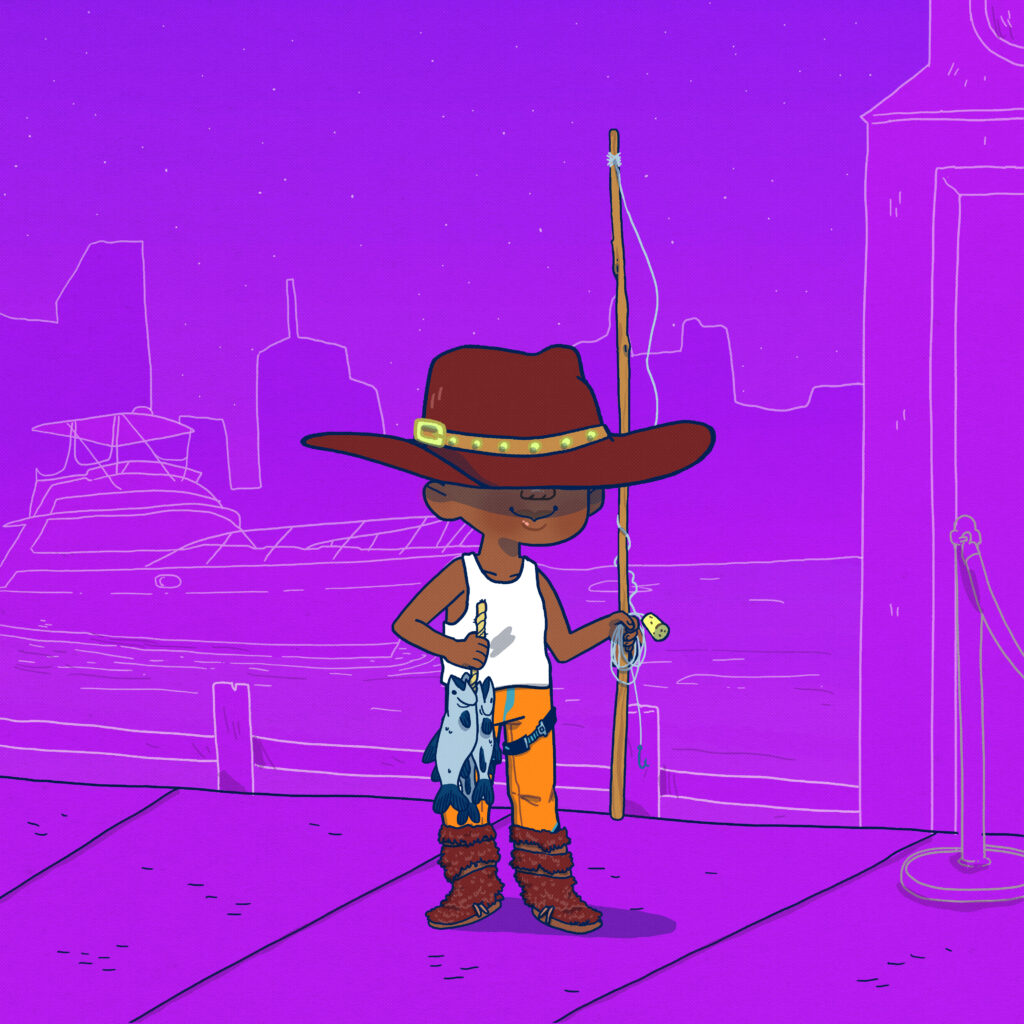
The quick answer is yes, digital collectibles are just another name for NFTs which has recently grown in popularity.
Digital collectibles have been around for decades, initially referring to items such as digital collectible card games or digital collectible comics. However, in recent years, the term has taken on a new meaning, referring to assets that are tied to the blockchain.
Major brands and companies, such as Starbucks and Reddit are entering the NFT space and using the term “digital collectibles” in order to appeal to a wider audience. These companies may prefer to avoid using technical terms like “NFTs” or “blockchain,” and instead opt for more familiar language like “rewards” and “digital collectibles.” There are likely a variety of reasons for this, but three key factors stand out.
*Editor’s note: for the remainder of this article, we will be using the terms “NFTs” and “digital collectibles” interchangeably.*
Why “Digital Collectibles” Is Increasing in Popularity:
1. The term “Non-Fungible Tokens” (NFTs) is not widely known or understood by the general public. This makes it difficult for those familiar with the technology to explain it to others. Engineers and technologists, while skilled in their respective fields, may not always have the best branding or marketing strategies for their innovations. The result? NFTs have struggled to gain widespread recognition and understanding.
2. “Digital collectibles” is a more memorable and intuitive term that encompasses the history and essence of the concept. Even those with limited technical knowledge can likely grasp the meaning of the name.
3. “The term “NFT” has a negative reputation among the general public. This stigma is largely driven by an outdated perception of their environmental impact (digital collectibles today are actually incredibly energy efficient, as we’ll get into later). Moreover, the abundance of scams has further damaged the perception of NFTs.
Many people are only interested in the practical application of technology rather than how it functions on a technical level or what it’s called. The truth of the matter is that most people don’t know or care how things work, so long as they do. As a result, it’s likely that we will continue to see the term “digital collectibles” rise in popularity.
Are Companies Investing in Digital Collectibles?
Once again, the quick answer is yes, major companies are investing in digital collectibles. In a newsletter about brands and celebrities that we wrote back in August 2021, we mentioned that the following brands had already entered or were planning to enter the market:
Bose, Burberry, Tiffany & Co., Netflix, MAC Cosmetics, Hello Kitty, Pepsi, Getty Images, Snapple, Budweiser, Kia, TIME, eBay, Gatorade, WWE, Johnnie Walker, Adidas, MLB, PUBG, Almond Breeze, Taco Bell, Gucci, Nike, and so much more.
To that list we could add: Hasbro, Ticketmaster, Ray-Ban, Forbes, Warner, Clinique, Lacoste, Burger King, Liquid Death, Facebook/Instagram, Coca-Cola, McDonalds, Prada, the NFL, Adidas, Rolling Stone Magazine, Macy’s, Samsung, Hot Wheels, Bentley, Disney, and Paramount.
The list is seemingly endless and shows no signs of slowing down; rather, it’s accelerating. But for now, let’s take a moment to highlight three of those companies: Reddit, Starbucks, and Coca-Cola.
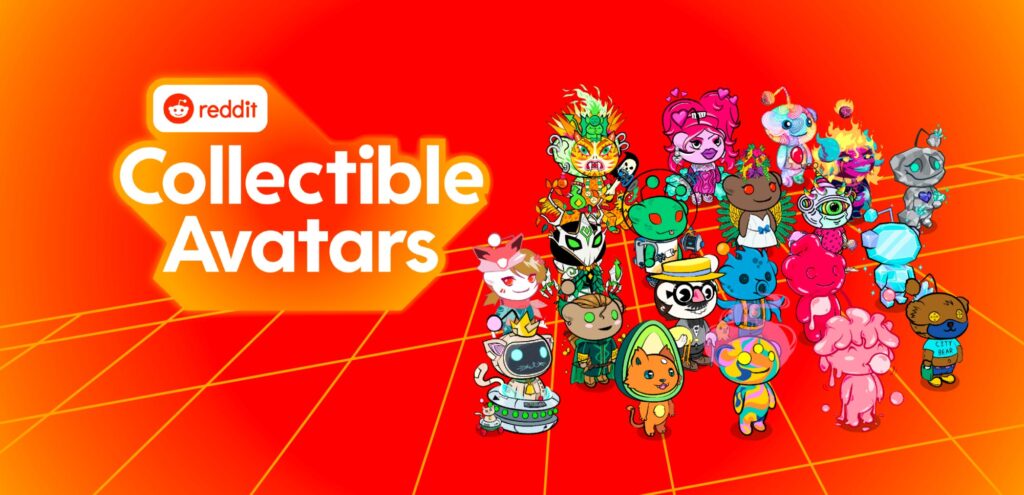
Announced back in July 2022, and launched shortly thereafter, Reddit launched its own series of NFTs. Their strategy? Don’t call them NFTs. Also, allow people to purchase them at a set price and with fiat currency.
These “digital collectibles,” (also known as “collectible avatars”) can be integrated into a user’s profile on Reddit, and provide a way for users to differentiate themselves. They can be purchased using cryptocurrency or credit cards.
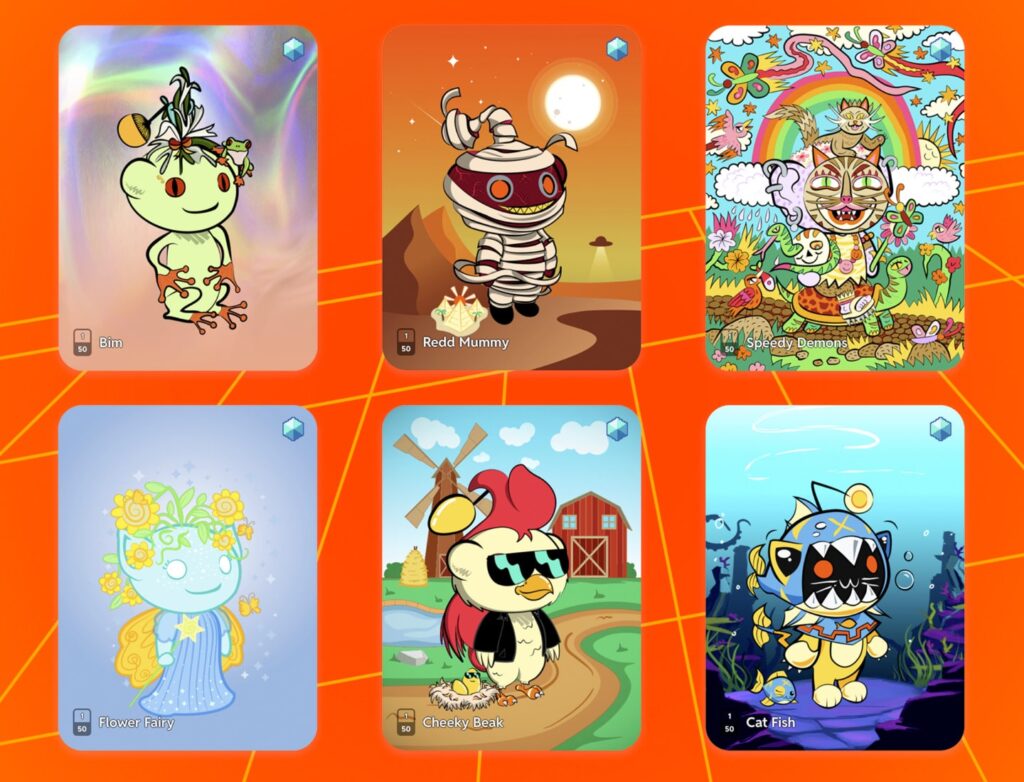
By October 2022, Reddit had attracted over three million users to its platform, which is an astounding feat for the early days of the digital collectibles community. How astounding is it? The user base quickly surpassed that of OpenSea, one of the leading NFT platforms, in a short period of time. This high level of adoption by the Reddit community demonstrates the potential for growth in the NFT/digital collectibles market, but also highlights just how few people are currently invested in this new technology.
Starbucks
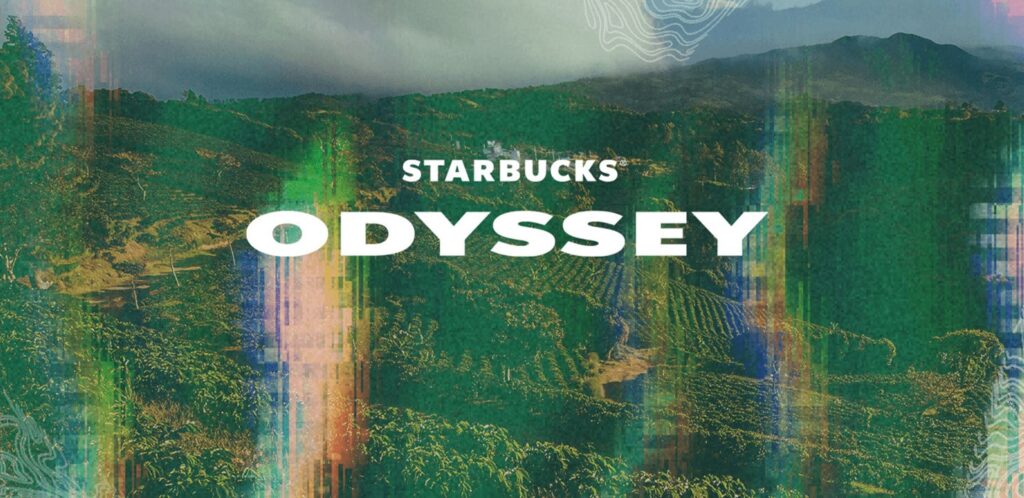
On December 2022, Starbucks launched its beta version of Starbucks Odyssey, a new platform powered by blockchain technology and featuring NFTs, exclusively for a select group of Starbucks Rewards members in the United States. In partnership with Polygon, an Ethereum-based scaling solution, and Nifty Gateway, a renowned NFT marketplace, Starbucks aims to reward customer loyalty through the use of NFTs. To increase accessibility and adoption, Starbucks will also accept fiat payments, meaning that customers do not need any prior knowledge of cryptocurrency or a crypto wallet to participate.
With Starbucks Odyssey, customers can earn virtual stamps similar to the traditional Starbucks Rewards program, but with the added benefit of exclusive perks and digital collectibles offered through NFTs. In a blog post, Starbucks explained the concept behind their exciting new venture:
Once logged in, members can participate in ‘Journeys,’ which include a series of interactive activities to complete. The activities will range from taking a virtual tour of Starbucks coffee farm Hacienda Alsacia in Costa Rica, to trivia about Starbucks heritage, to playing interactive games like the customer-favorite, Starbucks for Life. […] Once a Journey is complete, members will be awarded with a collectable ‘Journey Stamp’ (a Polygon-based NFT) and bonus Points towards their overall Point total.
From “The Starbucks Odyssey Begins”, dated Dec 8th, 2022
According to Starbucks, the Odyssey program aims to foster loyalty and community among its customers by offering new coffee experiences and rewards. To accomplish this, the company collaborated with Forum3, a Web3 customer loyalty specialist, to create the program.
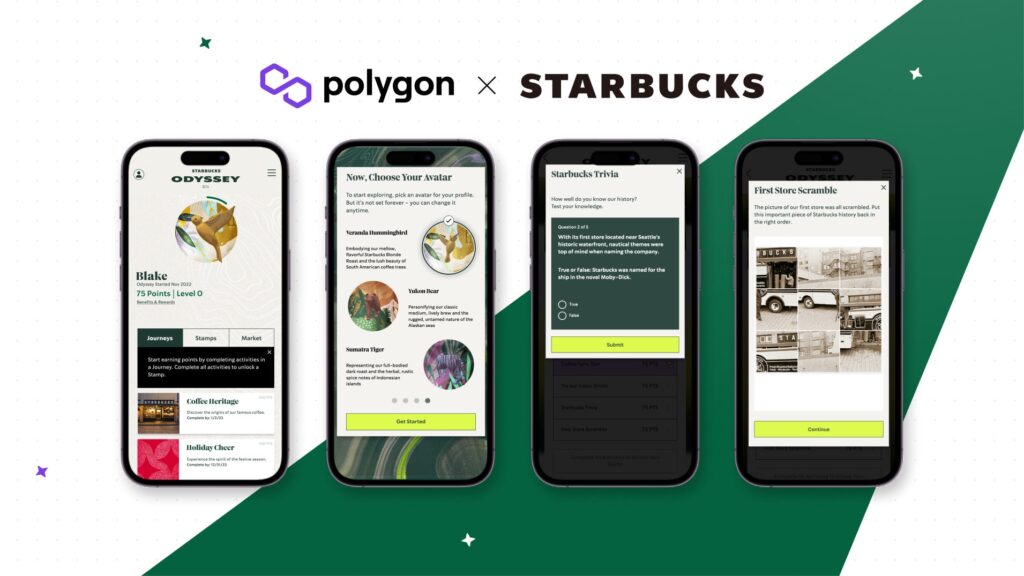
While the Reddit model appears to be driven by its community, the Starbucks model, at first glance, seems to be a safe extension of its existing rewards program. For a lot of major brands (and by proxy, their customers), these two model strategies will likely be their first venture into the digital collectible/NFT market.
Coca-Cola
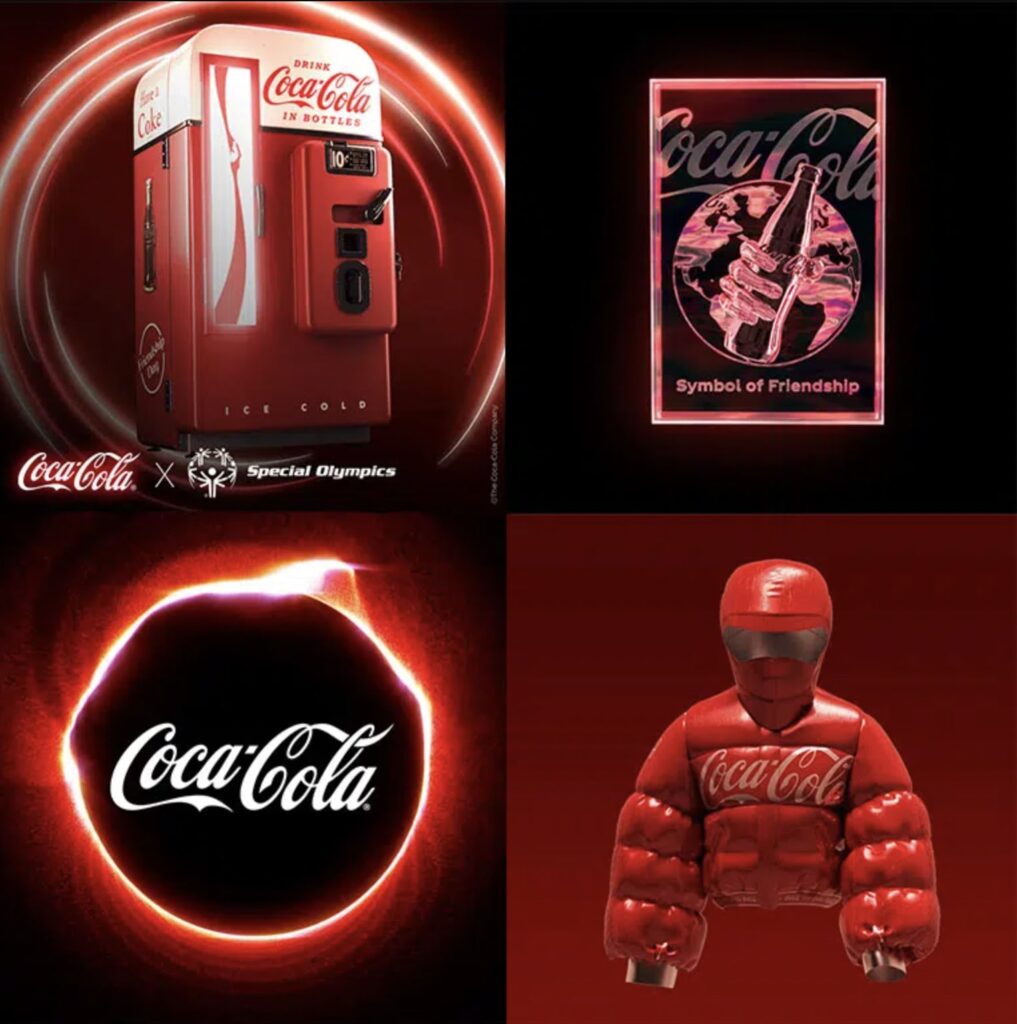
Coca-Cola made its debut in the digital collectibles/NFT space with an open auction for “The Friendship Box,” a solitary digital collectible collection released in honor of International Friendship Day on July 30, 2021. The item sold for a staggering 217 ETH, which was equivalent to over $500,000 at the time of its release and around $287,000 at the time of this publication.
It came with a number of perks, the coolest of which (pardon the pun) was a real life retro Coca-Cola fridge made in Italy for the auction winner.
The following year, Coca-Cola dropped a low-cost collection in honor of Pride Month, aptly called “The Pride Collection”. They pledged to donate a portion of the proceeds from the initial sales and any future resales to LGBTQIA+ charities.

While Coca-Cola continues to experiment with partnerships for events, it remains to be seen how or when they’ll enter the market in full force.
Which Game Companies Support Digital Collectibles?
Blockchain games have occasionally been touted as one of the best ways to introduce people to the world of digital collectibles. Many believe that the right game can push adoption of new users, as well as help people understand this new ecosystem.
While web3 gaming is still a relatively new concept, there have already been several notable successes. Some examples of games that have made an impact in the digital collectibles market include Axie Infinity, CryptoKitties, The Sandbox, and Gods Unchained. Axie Infinity, for instance, reached a peak of nearly 3 million daily active users in November 2021, and was particularly popular in the Philippines. CryptoKitties, one of the earliest blockchain games on Ethereum, has seen over 71,000 ETH traded in total volume.
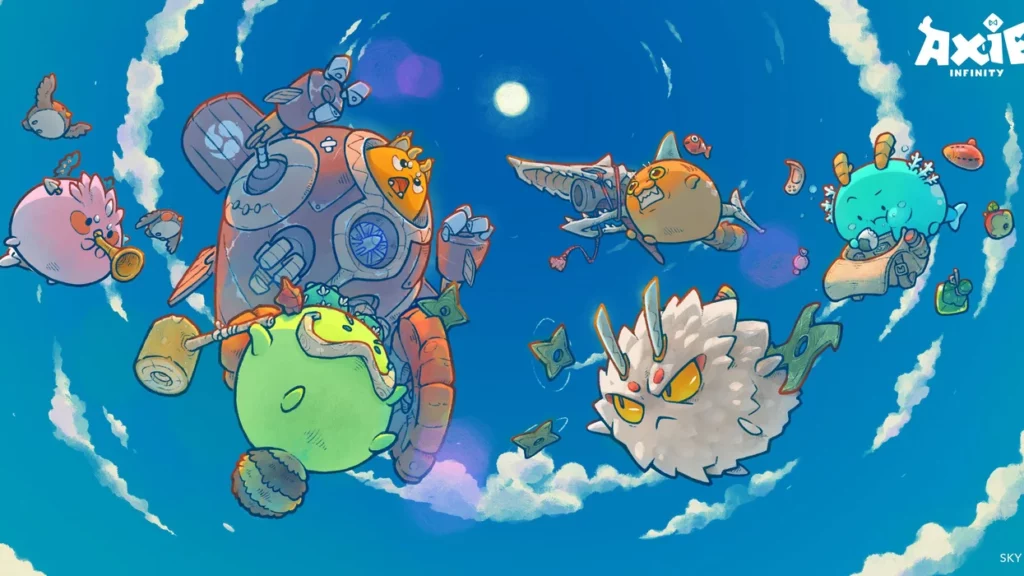
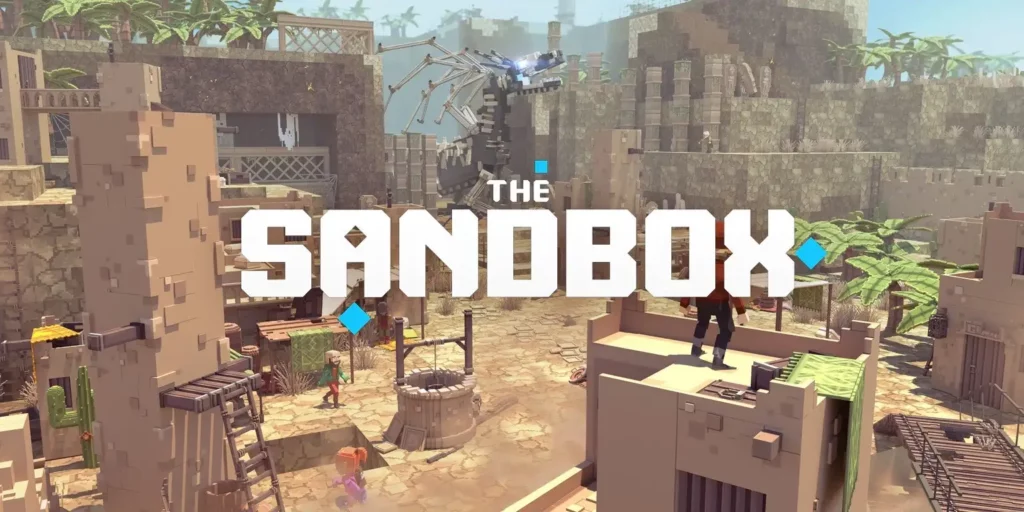
Unfortunately, many of these games have also dealt with major setbacks or limitations. Axie Infinity, for instance, was famously targeted by North Korean hackers, and lost well over half a billion dollars at the time of the heist.
Despite this, the future of gaming is still bright. Many will draw inspiration from these pioneering, early generation games, and they in turn may make the next generation of decentralized applications (also known as dapps), that bring in millions of players.
GDC and Studio Interest in Crypto & NFTs
Regardless of the ample room for growth, the market for digital collectibles has yet to reach its full potential. Currently, mobile games dominate the gaming industry, and there are numerous challenges to overcome, including a general rejection by modern gamers.
In a poll conducted by the GDC’s State of the Game Industry (2022), 2,700 game developers expressed a clear disapproval of crypto and NFTs.
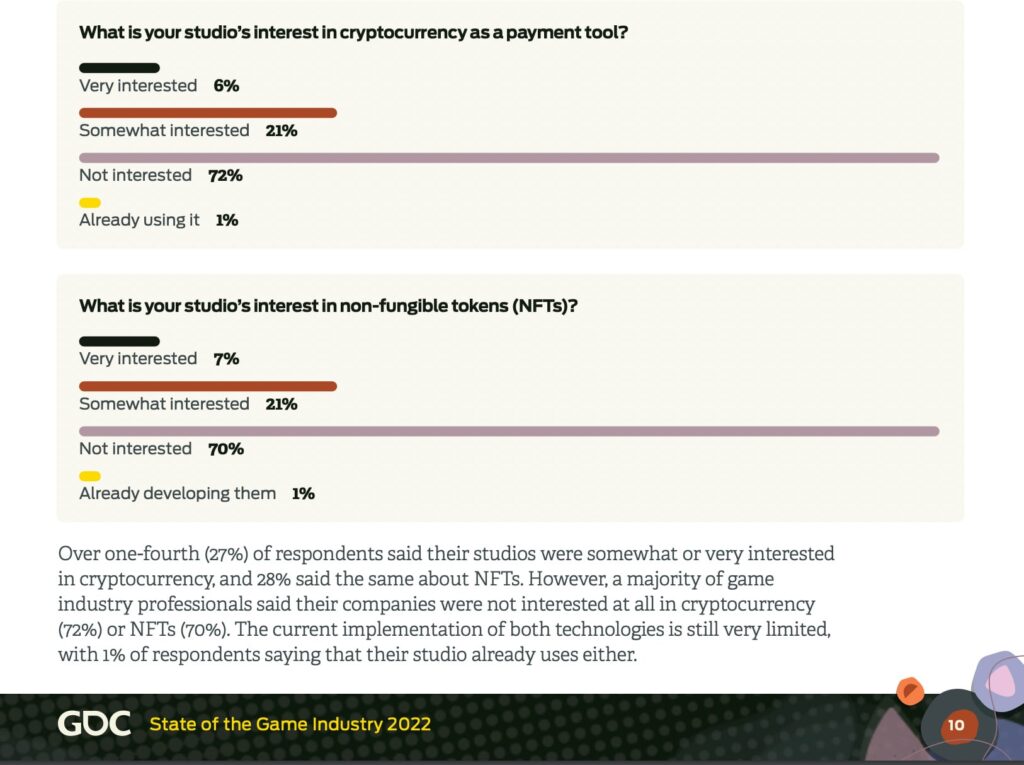
Even still, many game developers and retailers have already explored the field of blockchain games. Let’s take a look at a few of them.
Square Enix

Perhaps few are as bullish (optimistic) on the potential of blockchain games as Yosuke Matsuda, the current President and Representative Director of Square-Enix, whose games include the Final Fantasy & Dragon Quest series, among countless others. In a letter released at the beginning of 2022, Matsuda shared his thoughts on the potential of blockchain gaming and outlined Square Enix’s plans for the future:
By contrast, blockchain games, which have emerged from their infancy and are at this very moment entering a growth phase, are built upon the premise of a token economy and therefore hold the potential to enable self-sustaining game growth. The driver that most enables such self-sustaining game growth is diversity, both in how people engage with interactive content like games, and in their motivations for doing so. Advances in token economies will likely add further momentum to this trend of diversification. I see the “play to earn” concept that has people so excited as a prime example of this.
[…]
I believe that this will lead to more people devoting themselves to such efforts and to greater possibilities of games growing in exciting ways. From having fun to earning to contributing, a wide variety of motivations will inspire people to engage with games and connect with one another. It is blockchain-based tokens that will enable this. By designing viable token economies into our games, we will enable self-sustaining game growth. It is precisely this sort of ecosystem that lies at the heart of what I refer to as “decentralized gaming,” and I hope that this becomes a major trend in gaming going forward.
You can read the whole letter here.
Ubisoft
Ubisoft is also a company taking a bold stance. Having already set up their own beta platform called Ubisoft Quartz on the Tezos blockchain, they’ve implemented digital collectibles (which they call Digits) into one of their AAA games: Tom Clancy’s Ghost Recon Breakpoint.
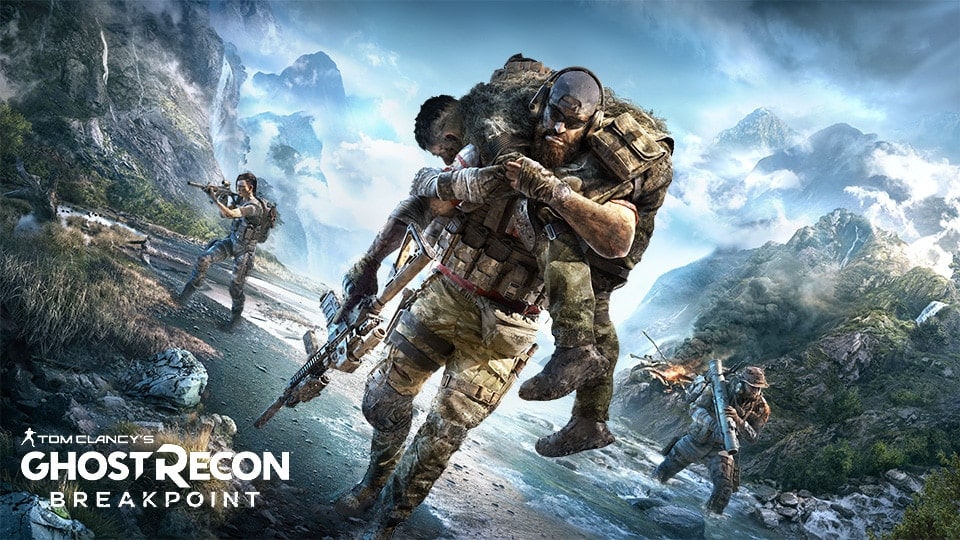
Despite negative feedback from the community, it seems that Ubisoft has no plans to shut down Quartz. In an interview with Chris Stead of Finder, Nicolas Pouard, VP at Ubisoft’s Strategic Innovations Lab, acknowledged the negative perception of the launch, but stated that they expected the reaction and plan to continue integrating Quartz and NFTs in their future games. He suspects that as gamers gain a deeper understanding of certain features, they will recognize their value.
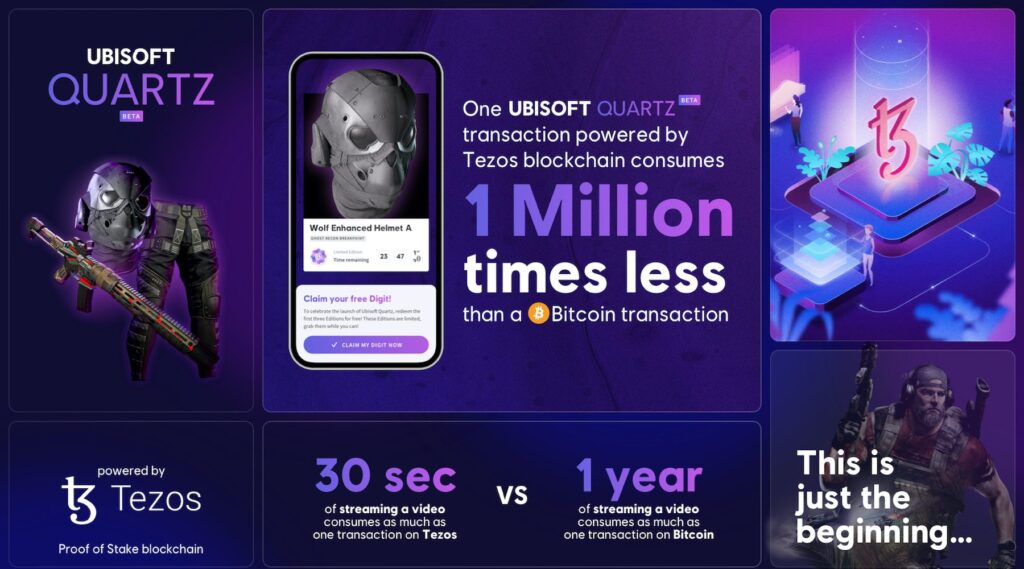
Pouard also noted that Ubisoft views gamers as early adopters who are receptive to new technologies and ideas.
I think gamers don’t get what a digital secondary market can bring to them. For now, because of the current situation and context of NFTs, gamers really believe it’s first destroying the planet, and second just a tool for speculation. But what we [at Ubisoft] are seeing first is the end game.
Chris also had an insightful remark about the time it takes for a community to adapt to change. In one of the most candid statements from the article, he said:
Also, this is part of a paradigm shift in gaming. Moving from one economic system to another is not easy to handle. There are a lot of habits you need to go against and a lot of your ingrained mindset you have to shift. It takes time. We know that.
You can read the full conversation here.
Konami
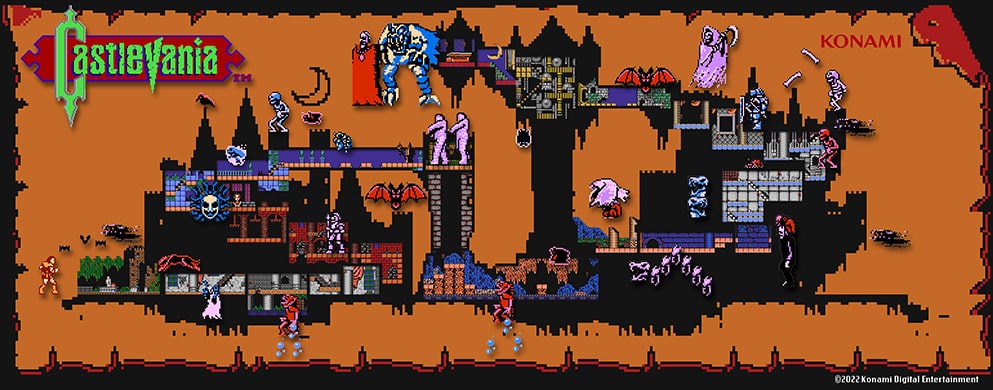
In January of 2022, Konami commemorated the 35th anniversary of the Castlevania franchise by releasing a collection of NFTs featuring videos, art, and music from the series.
While this was not as ambitious as Ubisoft’s use of NFTs in a major video game release, it demonstrated Konami’s willingness to experiment with the digital world. In October of the same year, Konami took a further step into the realm of digital collectibles by announcing the launch of their own NFT platform.
We have been conducting research and development to incorporate the latest technology into games and contents, and plan to launch a service where players can trade their in-game NFTs (digital items) through a unique distribution platform using blockchain.
From Konami’s press release
Along with the announcement, Konami stated that they were actively recruiting engineers, programmers, directors, designers, business developers, and more.
GameStop

On February 3rd, 2022, GameStop, the world’s largest video game retailer, announced that it was partnering with the cryptocurrency company ImmutableX (a L2 scaling solution for Ethereum), to create a $100 million dollar fund to provide grants for digital collectible technology and creators. The partnership went into live beta with their own crypto marketplace in July of the same year.
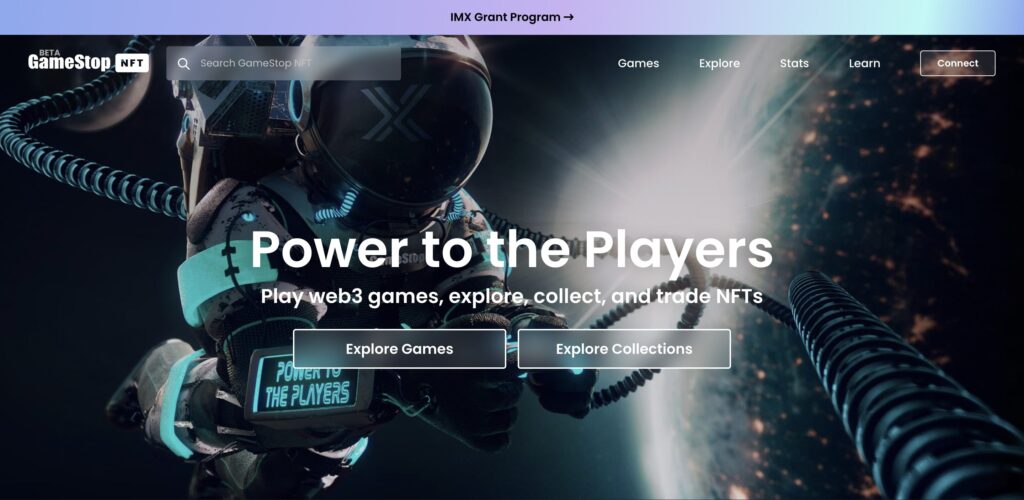
As major gaming developers and publishers are testing the waters, it looks as though NFTs in games are here to stay. However, many other developers are remaining cautious, either waiting for a more compelling use case for digital collectibles or for public sentiment to shift. In the meantime, this presents an opportunity for blockchain-based gaming companies to capitalize on their hesitancy.
It is likely that we will see a surge of established game developers entering the digital collectibles market once cryptocurrency prices rebound following the 2022 crash.
Why Are Digital Collectibles Good for Creators?
Many creators have found digital collectibles to be a valuable asset for themselves due to their potential for innovation and community building. These unique qualities have led to success for many who may have otherwise struggled to be discovered through more traditional methods.
Innovation
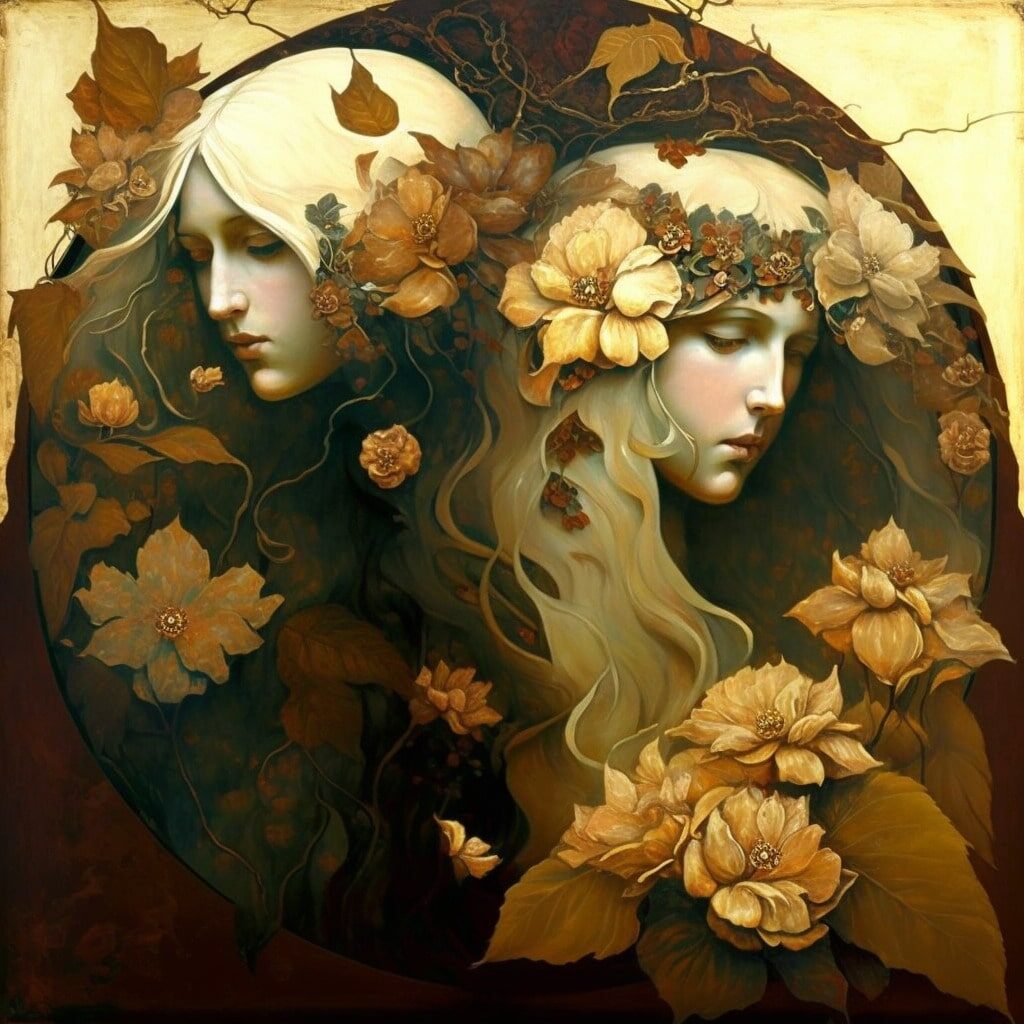
Digital collectibles offer an unparalleled opportunity for artists to create immersive and interactive experiences. These collectibles can incorporate a wide range of media, such as images, videos, and music, as well as unique elements that are almost exclusively possible in the digital realm, such as generative art. Generative art refers to artwork that is partially or fully constructed by autonomous systems, often using coding, algorithms, AI, or other non-human processes. Digital collectibles can also integrate dynamically updated content which evolves over time, work that is collaboratively made between the artist and the minter, or projects which use token-based mechanisms such as burning for maximum creative effect.
In addition to providing an innovative platform for artistic expression, digital collectibles can also enhance the value of a creator’s work by offering additional experiences beyond the art itself. For example, creators can offer items that grant access to exclusive behind-the-scenes content, early drafts, or even tickets to special events in the physical world. This added layer of engagement can help creators to build a stronger connection with their audience and increase the overall value of their work.
Furthermore, digital collectibles offer creators a number of economic benefits, including the ability to avoid traditional gallery costs and middlemen. By selling directly to customers, creators can price their work competitively while still earning a good profit. Many NFT marketplaces also offer a percentage of each sale to the original artist, allowing creators to earn ongoing royalties for their work (one of the most frequently cited reasons that artists begin making NFTs). The blockchain-supported record-keeping of the digital collectibles market also offer creators long-term technological security and peace of mind. Additionally, the ability to fractionally co-own a single artwork among multiple buyers significantly improves the chances of selling one’s art. Overall, digital collectibles provide a valuable and creative platform for those looking to showcase and monetize their work.
Community
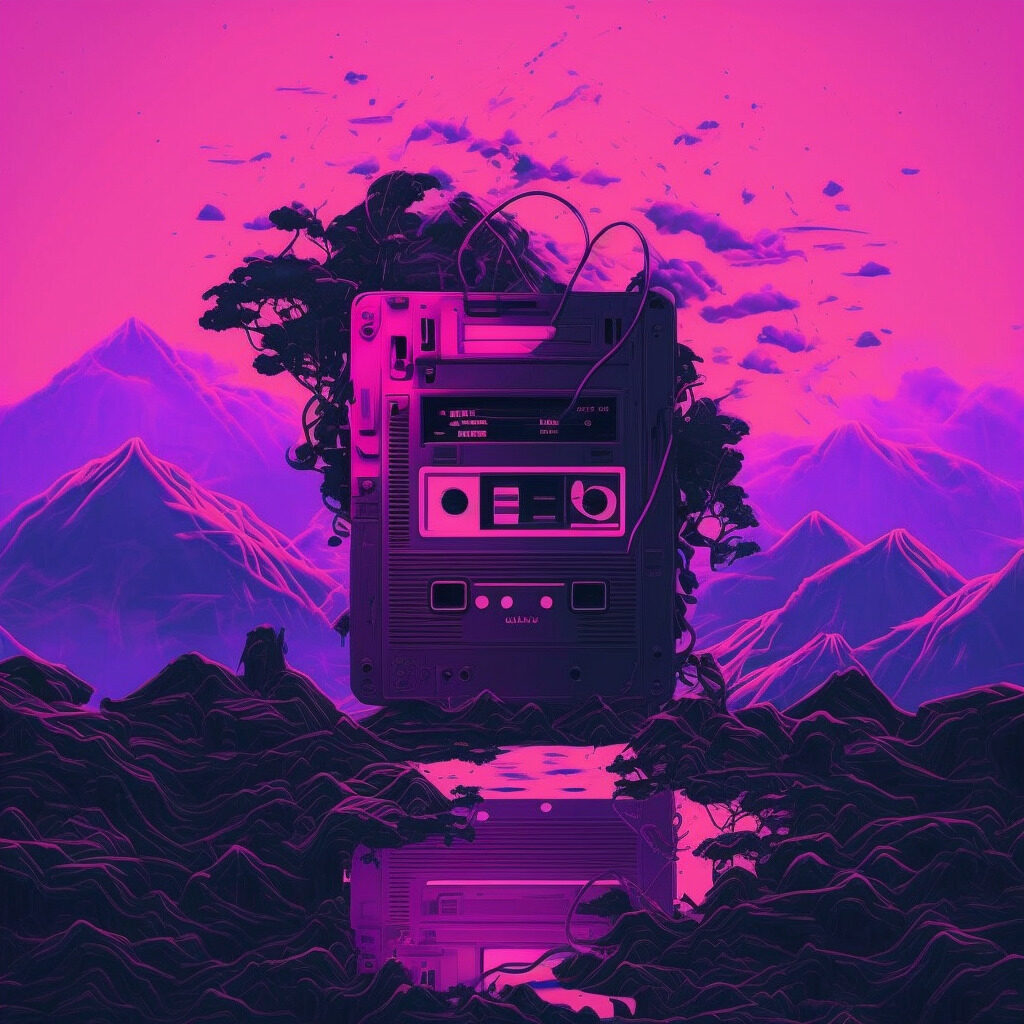
Digital collectibles can be a fantastic way to show appreciation for dedicated fans. For instance, a creator may choose to reward their most loyal supporters with a special/limited edition piece of work dropped directly to their crypto wallet.This serves as a tangible acknowledgement of the support and encouragement that the fans have provided over a significant period of time, and can be easily distributed as desired.
It should also be mentioned that one of the most powerful benefits of digital collectibles is the ability to foster and develop a sense of community. Online platforms such as Discord and Twitter provide an (admittedly chaotic) space for collectors to connect and engage with each other, where they can discuss their favorite creators and works. This not only creates an intimate and dynamic environment for artists and collectors to interact and exchange ideas, but it also gives creators a chance to build a loyal and engaged fan base. In the world of web3, community is everything, and bonding over a mutual love of digital collectibles can be a powerful tool for cultivating a strong and vibrant community.
On a related note, if you’re an artist considering creating digital collectibles/NFTs, our article, 7 Reasons Why You Should Make NFT Art, can help you make an informed decision as to whether it’s right for you.
Are Digital Collectibles Bad for the Environment?

If there’s one thing everyone thinks they know about digital collectibles/NFTs, it’s that they’re bad for the environment and built upon highly inefficient, labor-intensive blockchains. And while this was true for a period of time (and remains true for Bitcoin), pretty much any blockchain where digital items are bought, sold, or traded today are incredibly energy efficient. In fact, the production and sale of digital art has a smaller environmental impact compared to traditional art due to the materials and resources required in its creation.
Bitcoin: Why the World Thinks Digital Collectibles/NFTs Are Evil
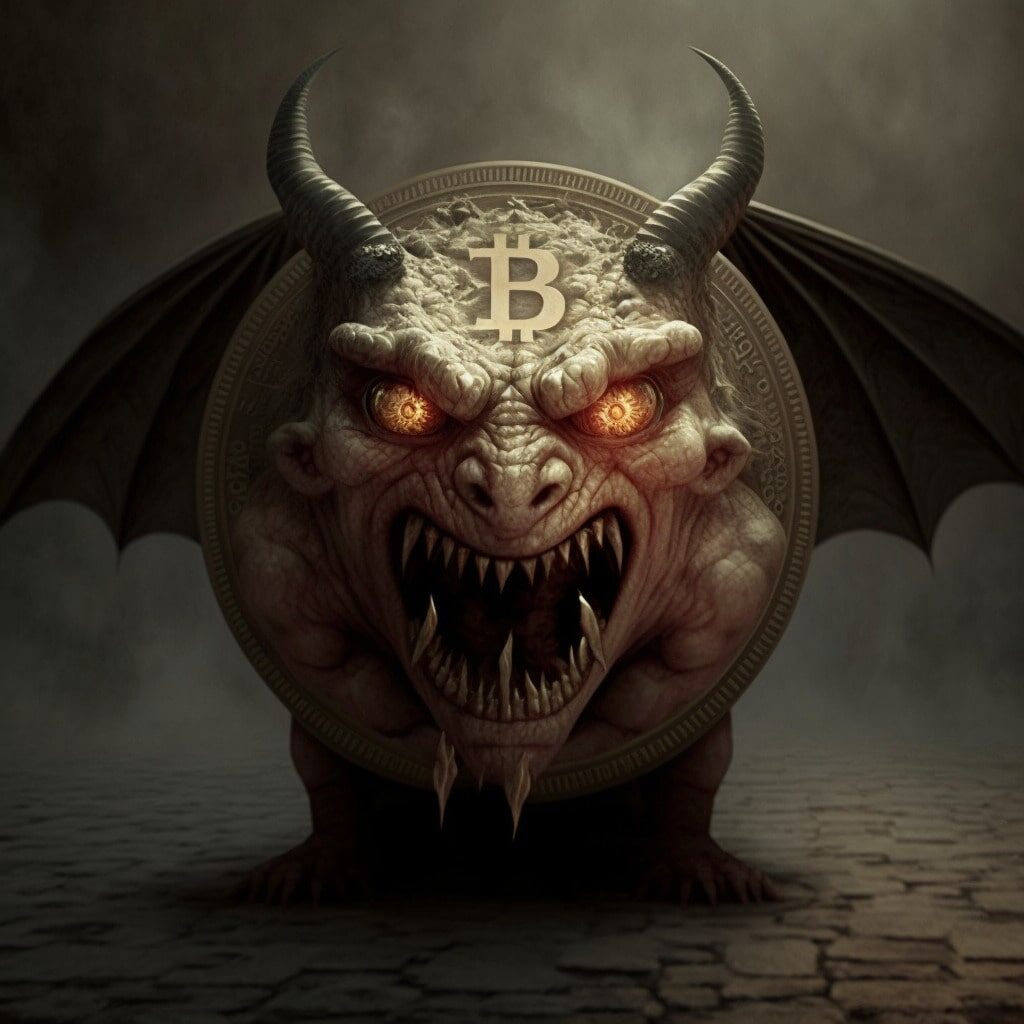
Bitcoin’s energy consumption has long been a source of concern, as it has been widely recognized as being exorbitantly inefficient and wasteful. This is something that nearly everyone but the staunchest of Bitcoin defenders can agree upon.
In a well known study published in early 2021, Cambridge researchers crunched the numbers and found that Bitcoin uses more annual electricity than all of Argentina, at a whopping 121.36 Terawatt-hours (a Terawatt is one trillion watts). While the bear market of 2022 caused a decrease in Bitcoin’s energy usage, it is likely that we will see similar or even higher levels of energy consumption during the next Bitcoin bull run, as an influx of new users puts additional strain on the network’s energy demands.
This high level of energy consumption is not only environmentally detrimental, but it also represents an unnecessary drain on the earth’s resources.
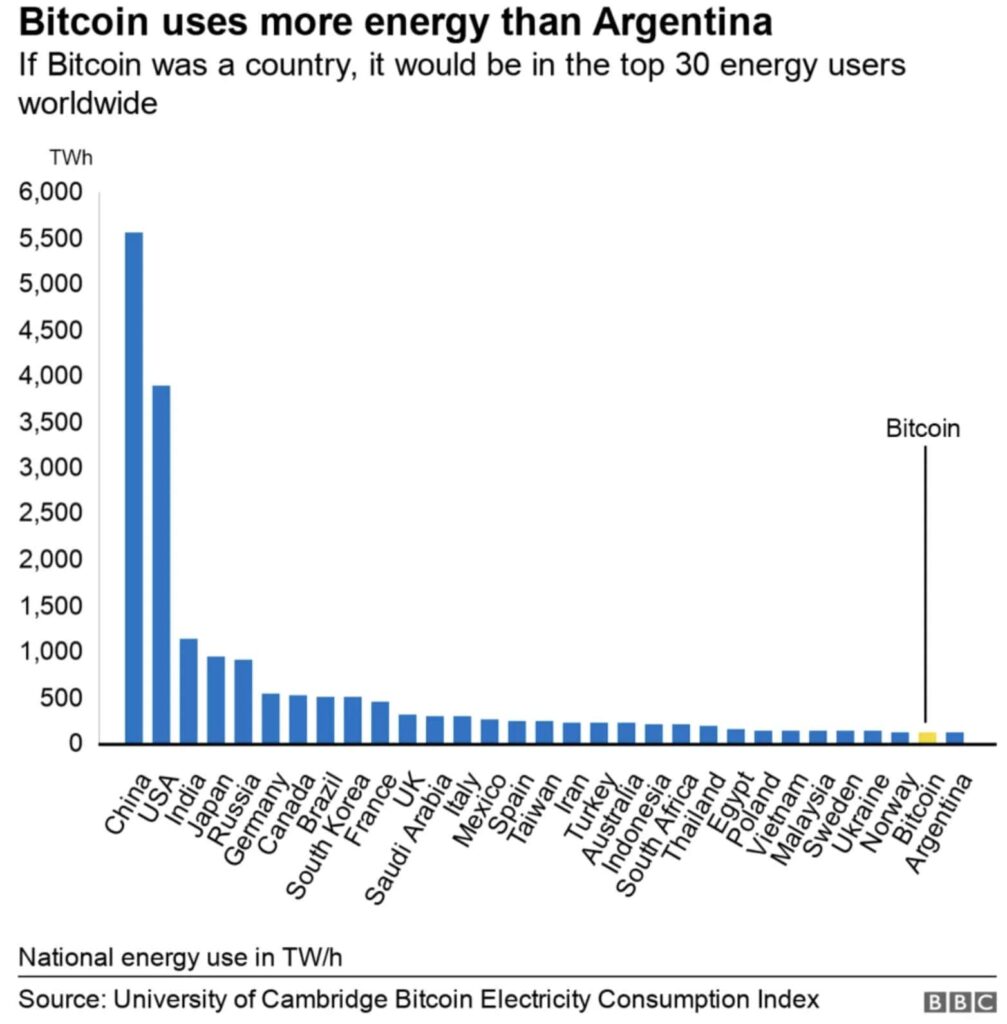
Why is Bitcoin So Wasteful?
So why does Bitcoin require so much energy? It all comes down to how it adds blocks to the blockchain. Long story short: miners on their network put their computer’s GPUs to the test through a series of trial and error, attempting to solve difficult mathematical problems in order to earn Bitcoin. This ongoing and repeating process requires a great deal of electricity.
As the first and most well-known blockchain, Bitcoin understandably bears the lion’s share of the public’s ire. However, it is worth noting that Bitcoin was the first of its kind, and the first of any technology is always going to be the least efficient. It is only through further development and refinement that technology becomes more efficient over time. Therefore, it is important to continue pushing Bitcoin to find and implement more energy-efficient solutions.
There has also been a lot of criticism directed towards digital collectibles/NFTs, particularly those that are built on the Ethereum blockchain, which is the largest platform for NFTs. One reason for this criticism is that Ethereum used to rely on a Proof of Work system, which is known to be energy-intensive, wasteful, and similar to Bitcoin. And, as NFTs require computationally more effort to record on the blockchain than say, a simple crypto transaction, Ethereum was, for a time, contributing to this wastefulness. However, it is important to note that even at its highest level of energy consumption, Ethereum was never as wasteful as Bitcoin.
Ethereum Goes Green; Becomes 99.95% More Energy Efficient Overnight
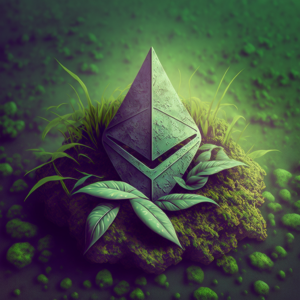
On September 15th, 2022, Ethereum, the blockchain market leader for digital collectibles by a country mile, made a major change to its network by transitioning from a Proof of Work system (like Bitcoin) to a Proof of Stake system. This switch was the result of years of careful planning and testing on a parallel “Beacon Chain” in preparation for “the merge”.
In an amazing feat of technical wizardry, Ethereum became ~99.95% more energy efficient overnight. Now, this green blockchain is not only smaller, but it also has a significantly lower environmental impact than nearly any traditional art form.
Digiconomist had previously calculated that Ethereum miners consumed roughly 44.49 TWh per year. As of September 15th, 2022 however, Ethereum is around 2,000 times more energy efficient, based on conservative estimates.
Ethereum.org had this tidbit to add:
If energy consumption per-transaction is more your speed, [Ethereum is] ~35Wh/tx (avg ~60K gas/tx) or about 20 minutes of TV. By contrast, Ethereum[‘s old] PoW [system] uses the equivalent energy of a house for 2.8 days per transaction and Bitcoin consumes 38 house-days worth.
Initially, the Beacon Chain shipped separately from Mainnet. Ethereum Mainnet – with all its accounts, balances, smart contracts, and blockchain state – continued to be secured by proof-of-work, even while the Beacon Chain ran in parallel using proof-of-stake. The Merge was when these two systems finally came together, and proof-of-work was permanently replaced by proof-of-stake.
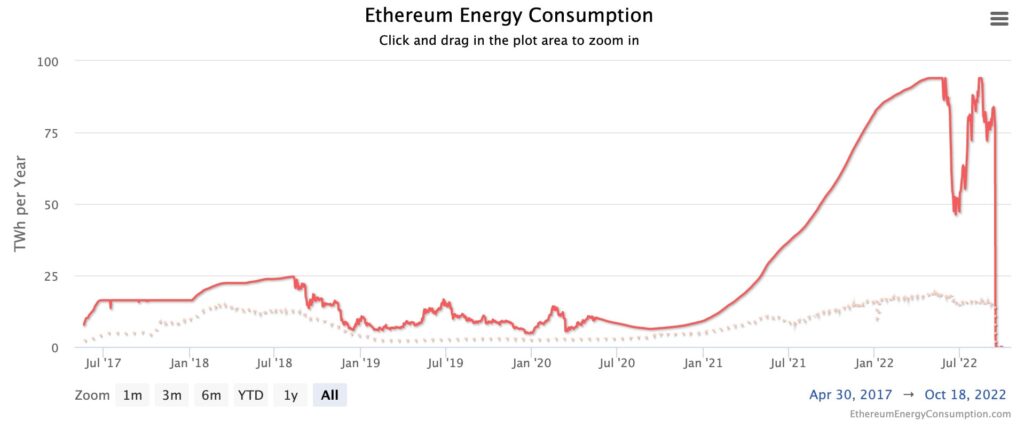
Ethereum’s Ecological Impact Today
The successful transition from Proof of Work to Proof of Stake has further solidified Ethereum as a reliable and eco-friendly blockchain option, known for its versatility, robust smart contracts, and reduced environmental impact.
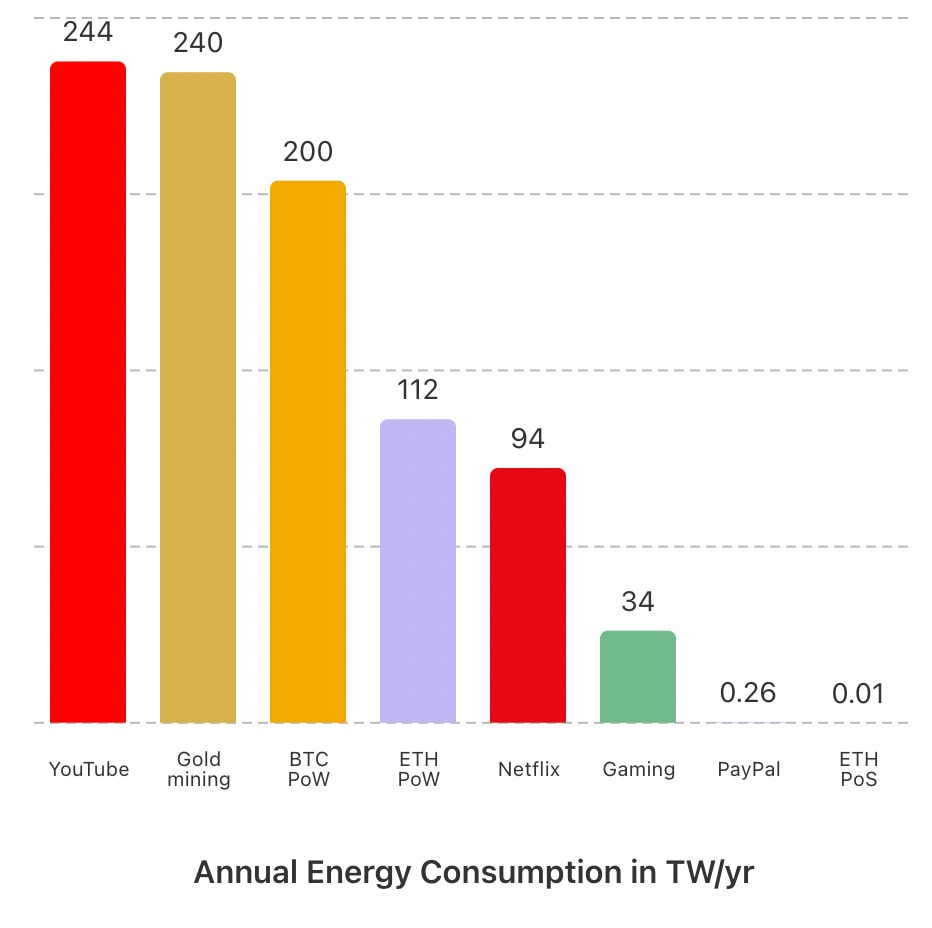
Ethereum’s current energy usage is approximately 0.01 TWh/yr, making it significantly more energy efficient than other major players such as PayPal, Netflix, and YouTube. In fact, the energy consumed by people watching Gangnam Style in 2019 alone was 45 times greater than Ethereum’s annual energy usage today.
Which Is Better for the Environment: Digital Collectibles or Traditional Art?
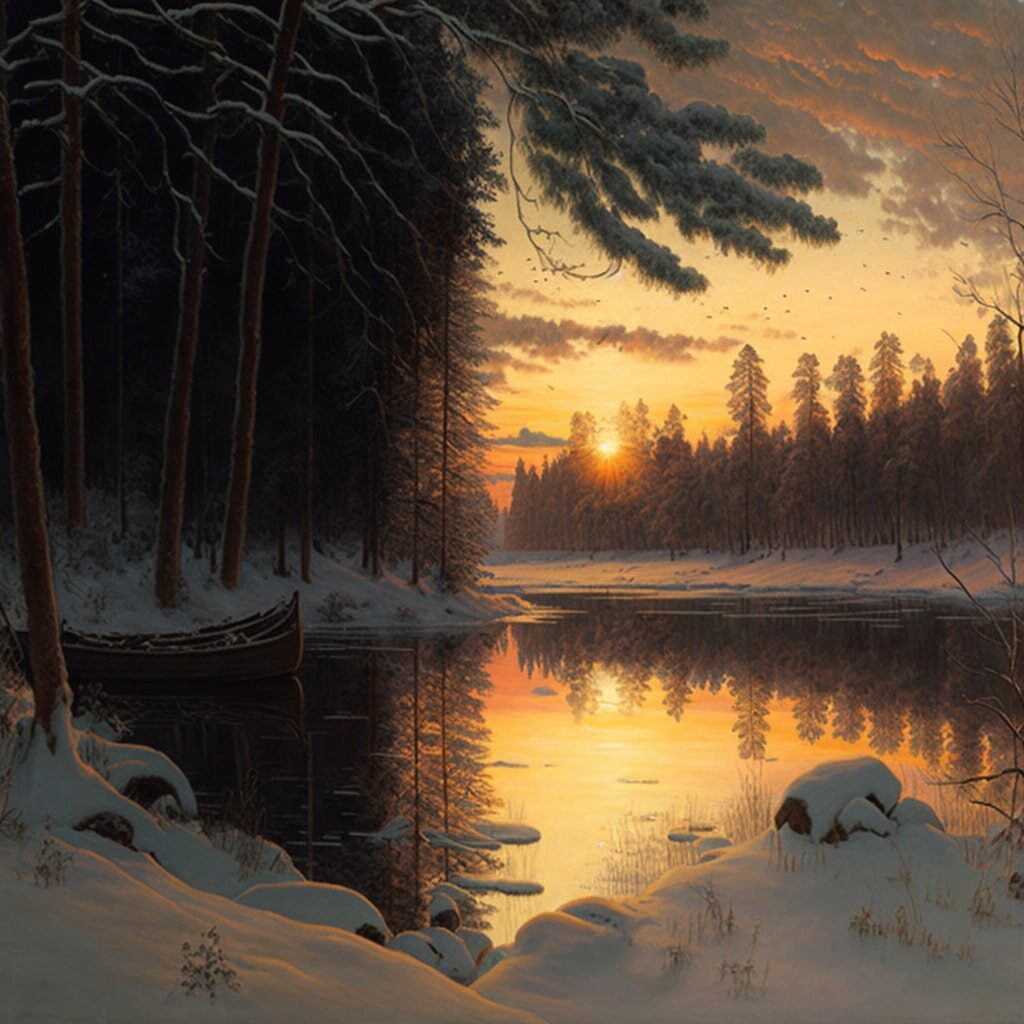
As we’ve already established, Ethereum (the leader in digital collectibles) is now a green blockchain, consuming drastically less energy per year than video games (3400 times less) or Netflix (9400 times less). Not only is Ethereum green, but the vast majority of blockchain alternatives are environmentally friendly as well: Solana, Cardano, Flow, and Tezos are all examples of green blockchains.
So how does Ethereum compare against traditional arts? Let’s briefly consider some of the costs and environmental impacts of various art forms and see how they measure up.
Writing

In 2021, over 825 million books were printed in the United States alone, leading to the consumption of 32 million trees annually. According to the National Wildlife Federation, 640,000 tons of books are also sent to landfills in the US each year without being recycled. This is concerning, especially when considering the global impact of deforestation. The journal Nature estimates that there are currently around 3 trillion trees worldwide, which represents a 46% decline since the beginning of agriculture 12,000 years ago. Deforestation, primarily for agriculture and crops, is the leading cause of tree loss, but the publishing industry also contributes to this issue, with an estimated 15 billion trees being felled each year worldwide. While the impact of the publishing industry may be smaller in comparison, it is still a significant and important factor to consider.
Painting
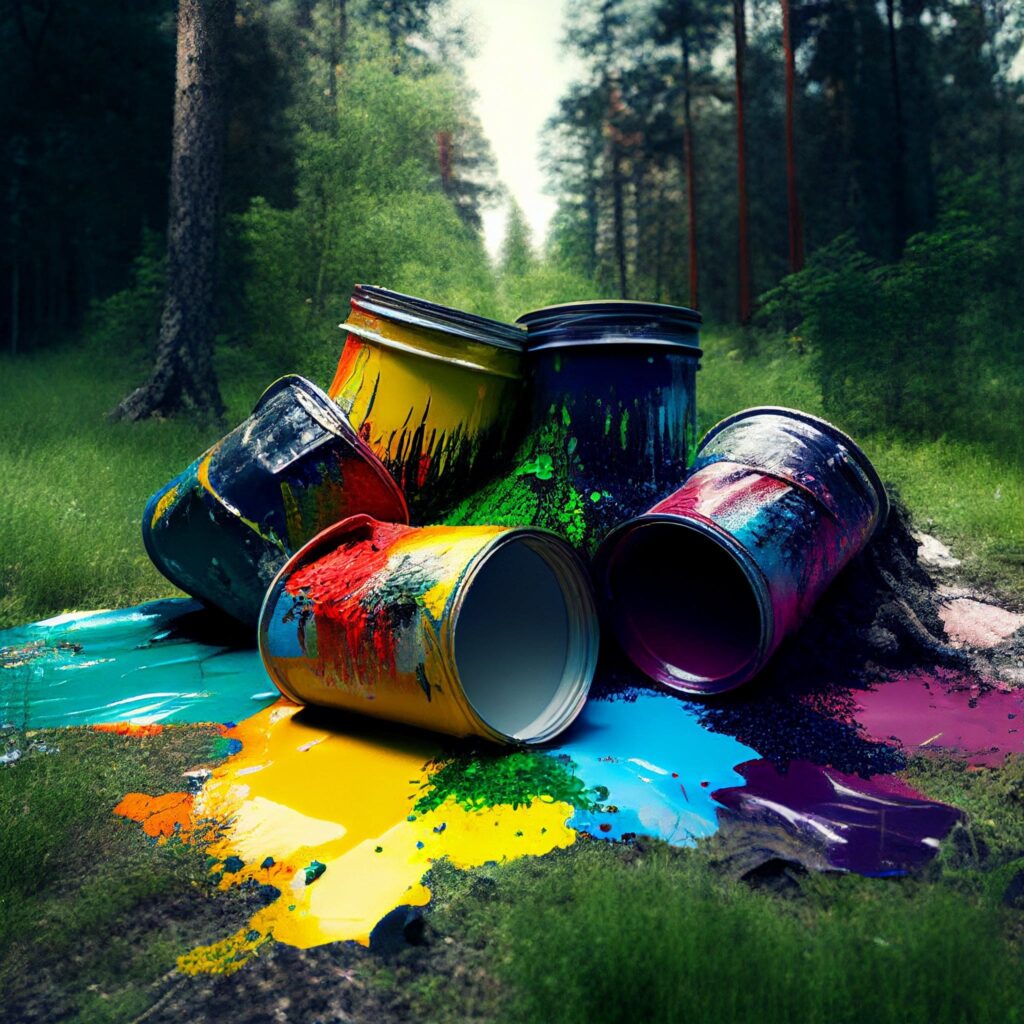
Some pigments, the lovely ingredients which give color to paint, such as mercury chromate, chromium oxide, cadmium sulfide, and cobalt chloride, are notoriously toxic.
Synthetic pigments, which are often derived from petrochemicals and coal tars, are also used in paint. These pigments are held in place with acrylic polymers and plasticizers to help the pigment bind and dry in place. Additionally, paint is often made with toxic solvents, such as oil-based chemicals.
The environmental impacts of paint extend further beyond the use of toxic pigments. The extraction and production of pigments, the factory production and transportation of paint, the release of volatile organic compounds during painting, the risk of spills, and the proper disposal of paint all contribute to the negative environmental impact of this art form.
Pottery

While clay seems relatively harmless at first, the extraction of clay has been tied to a number of ecological issues such as deforestation, erosion, and the silting of bodies of water. In addition, the mining activities surrounding clay extraction can modify stream morphology by distorting the channels or diverting stream flows.
The process of pulling a single substance like clay from the earth isn’t as straightforward as it might seem, either. Nature doesn’t keep things in isolation, and when extracting clay, other substances are frequently kicked into the atmosphere as well: various mineral dusts, iron, and whatever else was trapped in the immediate area surrounding the clay.
While pottery is more reusable than many materials, the high fuel use required for the firing of clay pottery (which is generally done twice) can be costly in terms of energy, regardless of whether it’s using gas, electricity or other methods—although fossil fuels are most common. Carbon monoxide, sulfur dioxide, and black carbon are just a few of the chemicals which are released in the firing process.
Sculptures
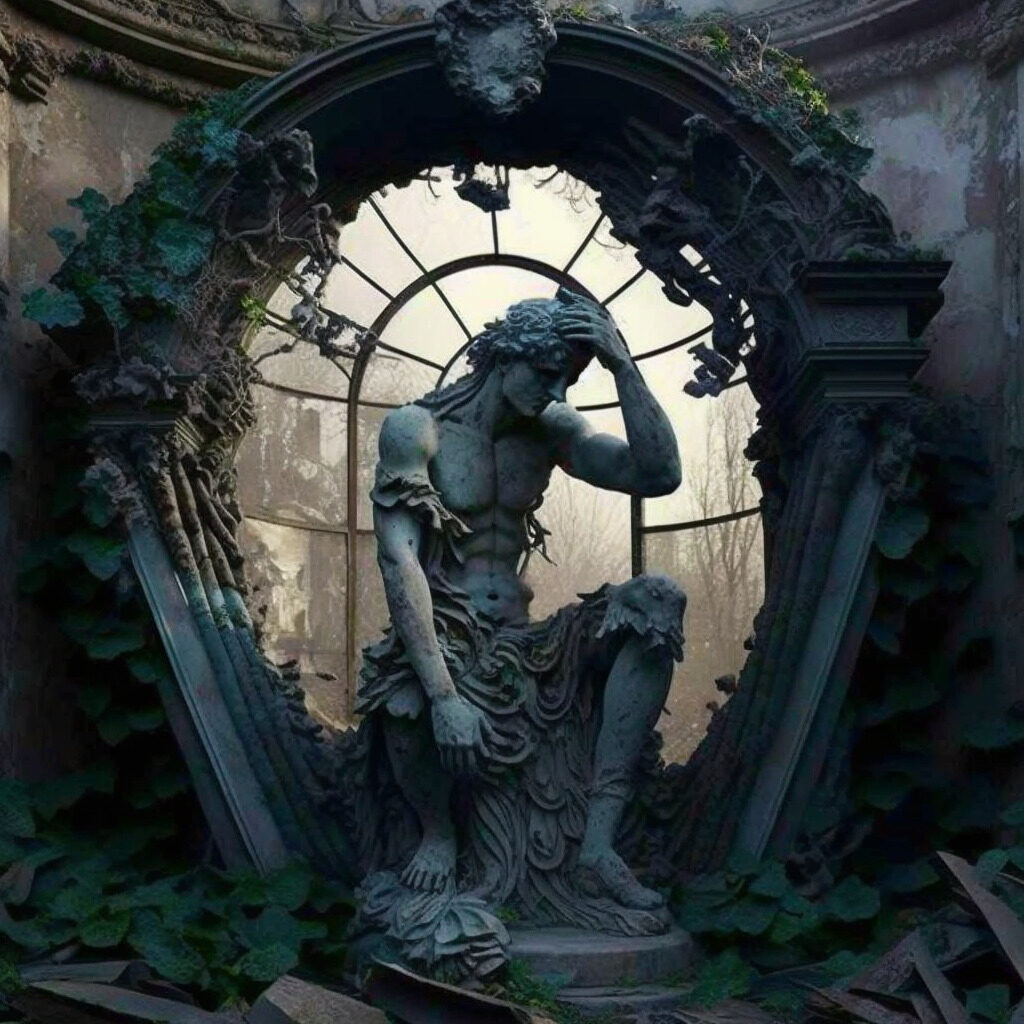
The extraction of marble for use in sculptures and other projects often involves the use of explosives, drilling, and vertical cuts, which can release marble dust into the air and contaminate water sources and soil. This process can also harm the respiratory health of anyone who inhales the dust.
Fiberglass, another commonly used material in sculptures, is cheap, lightweight, and durable. But it also carries with it a significant ecological concern: it stubbornly won’t break down. Because of this, it’s not recyclable. When it is discarded, fiberglass ends up in landfills and contributes to environmental pollution. The production of fiberglass also generates pollutants such as styrene, which can harm air quality.
Digital Collectible Environmentalism
At the end of the day, an iPad with Procreate making digital collectibles on a Proof of Stake blockchain is a greener alternative than nearly any art form. Apart from the initial manufacturing and transport costs, as well as the necessary electricity to run them, creating art digitally allows for a greater quantity of art to be produced with minimal comparative impact on the environment.
There’s no competition when it comes to a publishing industry and its water wasting, deforesting, landfill filling system, matched against a digital marketplace full of unburnable texts that can store a library on a single device. Working with clay, marble, and fiberglass may be a beautiful process, but a more ecologically responsible decision would be to sculpt digitally (which these days can even be done in 3D). As for painting, the damage it causes can be remedied by simply giving up a physical brush for a digital one.
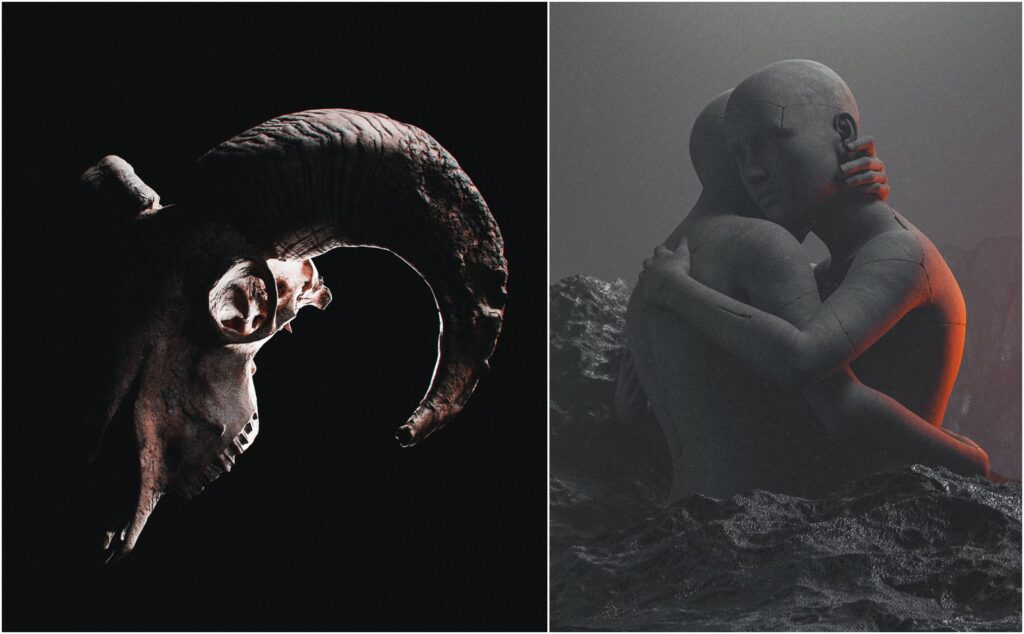
Even in this rather surface level analysis, it is clear that digital collectibles are a more responsible ecological choice than the majority of traditional art forms. For a longer conversation on the topic of digital collectibles vs traditional art, check out our Substack from October, 2022.
Are Digital Collectibles a Scam?
Many people have raised concerns about the value and authenticity of digital collectibles/NFTs due to the numerous and devastating instances of fraud in the crypto market at large.
The quick answer is no, nothing about digital collectibles is inherently a scam. But let us be completely clear: while the technology behind them is not a scam, there are a ton of thieves and swindlers online. These scams have resulted in billions of dollars in losses and ruined lives. Then again, so did Bernie Madoff, onetime chairman of the NASDAQ stock market and responsible for the largest Ponzi scheme in history ($64.8 billion). In other words, scams are not the sole domain of crypto and NFTs.

That being said, if you’re new, it’s crucial to educate yourself and be cautious before spending any money. Attend Twitter Spaces. Talk to people from communities you’re interested in. Read everything you can: for a good start, we suggest “NFT Scams: 10 Types You Need to Know”, a primer we wrote to better protect our readers from common scams in the industry.
Keep in mind that the digital collectibles market is still in its early days. Scams are likely to be more prevalent until there is a greater understanding of the technology and more safeguards are put in place.
Tulip Mania
It’s important to keep an open mind when it comes to new technology. Just because your PayPal was hacked or you received suspicious emails from someone claiming to be a prince, doesn’t mean that the entire internet is a scam. Similarly, it’s unfair to dismiss cryptocurrency and digital collectibles/NFTs as mere “tulips,”.
If you’re unfamiliar, the “tulip” insult comes from Tulip mania, a period that lasted from 1634-1637 in Holland, when the cost of some particularly desirable tulip bulbs skyrocketed in demand and price.

The Tulip mania of the 1600s is often portrayed as a straightforward bubble that suddenly burst, but the reality is more complex. In fact, historian Anne Goldgar, an expert on European cultural and social history, has even joked that she should have titled her book on the subject, “Tulipmania: More Boring Than You Thought,” due to the exaggeration of the events that occurred.
The same could be said about the crypto and digital collectible space right now. Things are bad. Potentially as bad as they’ll ever be. However, it’s important to remember that these issues only represent a small fraction of the bigger picture. Just as we wouldn’t suggest looking at this market with rose-tinted glasses, we wouldn’t advise focusing solely on the negative.
Beanie Babies, Silicon Valley, and VCs
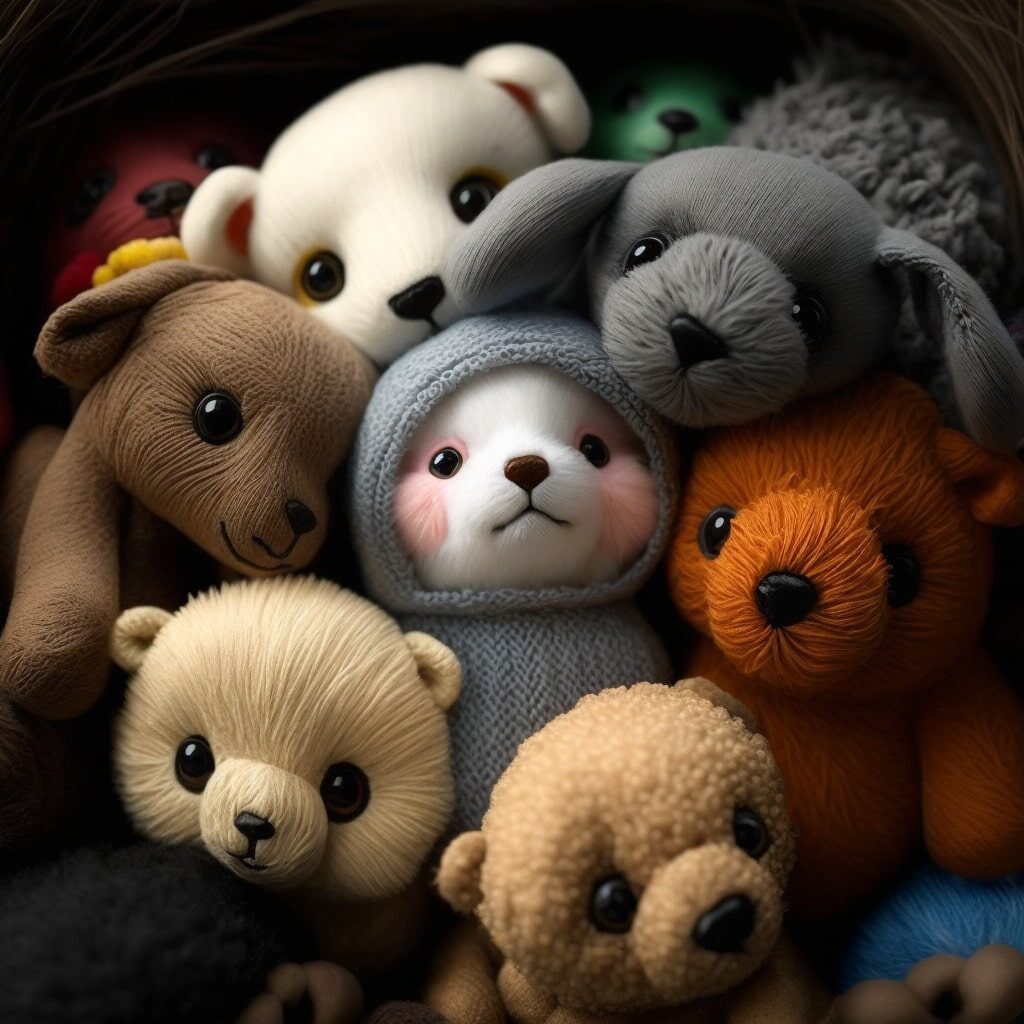
Alternatively, others have compared digital collectibles to popular fads like Beanie Babies, or the Pet Rock. The analogy crumbles upon examination, however. For one thing, the Pet Rock and Beanie Babies never had the attention or funding of VCs and Silicon Valley. This point cannot be overstated. A venture capitalist’s job entails carefully researching where to invest their money in order to yield a high return. The fact that these financial and tech leaders are investing in this technology (along with crypto, decentralized applications, and numerous other elements of web3) demonstrates that at the very least, they believe it is worth exploring.
Consider for a moment the internet and the long way it has come in terms of security. These days, spam filtering, encryption, and other technologies have greatly reduced the number of dubious emails, phishing scams, and hacks the average user encounters online. However, this was not always the case. Those who were around during the early days of the internet can attest to the fact that internet security was not always as advanced as it is today. For a long time, it was the wild west.
So what changed? Well, with time, refinements in technology, and a better understanding by the general public, the internet of today is far safer than it used to be. The same evolution will almost certainly happen with cryptocurrencies, digital collectibles, and other web3 technologies.
With research, due diligence, and a good understanding of the potential risks, you’ll find that there’s still plenty of legitimate reasons to be excited and participate in the world of NFTs.
Why Are Digital Collectibles Valuable?
Genuine, Authenticated Assets
Digital collectibles may be valuable for a variety of reasons. One of their greatest draws is that they provide a new level of authenticity and certainty. For collectors and art aficionados, this is the first time in history where you can confirm with absolute certainty that your assets are genuine and authentic. As a byproduct of this certainty, it is possible to build true digital scarcity into your product, allowing collectors and speculators to easily determine the rarity and value of the asset.
This certainty only exists because of the verifiable nature of the blockchain, which you can think of as a public ledger. A blockchain is essentially a decentralized, transparent, and secure database of transaction information. Additionally, the information within a blockchain is immutable and cannot be altered or controlled by outside parties, ensuring the integrity of the data.
Complete Digital Ownership
Ownership is another key factor contributing to the potential value of digital collectibles. As mentioned earlier in the article, these assets exist outside of third-party control and can be freely held, sold, or traded by their owners. Unfortunately, this is not always the case for digital items. Consider the video game industry, which has somehow managed to convince gamers worldwide to spend millions (if not billions) of dollars every year on digital assets they don’t own, have no rights to, and cannot use outside of the game publisher/developer’s platform.
In contrast, digital collectibles offer true ownership and the ability to freely use and trade the assets. This simple concept has the potential to greatly impact the value and perceived worth of digital items.
Is the Value of Digital Collectibles Manufactured?
Some critics and contrarians argue that digital collectibles/NFTs are only valuable because people perceive them as valuable. While this is true to an extent, the same could be said for all forms of trade, capitalism, and currency. After all, the value of these things is ultimately determined by public perception.
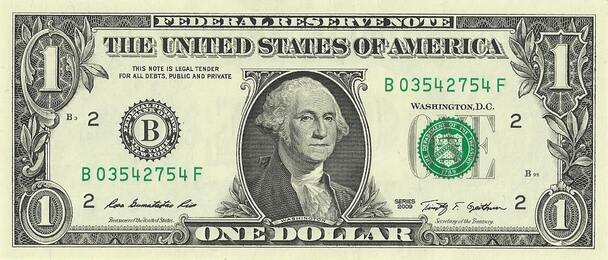
What makes a US dollar valuable? Green linen and cotton blend paper is not inherently imbued with value. Neither gold nor diamonds are particularly special either. The value of a US dollar is not intrinsic; we believe a dollar bill has value because our peers and government says it does. Similarly, the value of cryptocurrency and digital collectibles is based on the collective agreement of their worth. Despite fluctuations in the market, the movement towards decentralized finance and art is steadily gaining momentum. It has survived peaks, valleys, booms, and busts.
Like it or loathe it, it’s here to stay.
Can you sell digital collectibles?
As we’ve already established throughout the article, yes, digital collectibles can be sold. Just like physical collectibles, you can sell your work to a specific individual, put it up for auction, stick it in a marketplace, or hold onto it for as long as you like.
Digital collectibles have already been used to sell art, music, videos, digital land, promotional materials related to physical products, and even memes and tweets. Blockchain games, in particular, have seen significant success using digital collectibles, with many players trading or selling rare or unique items obtained in-game on the secondary market.
The digital art market is also noteworthy, with many artists building robust careers and establishing a fanbase of collectors. While not the norm, some digital collectibles/NFTs have sold for significant sums, even in the millions of dollars.
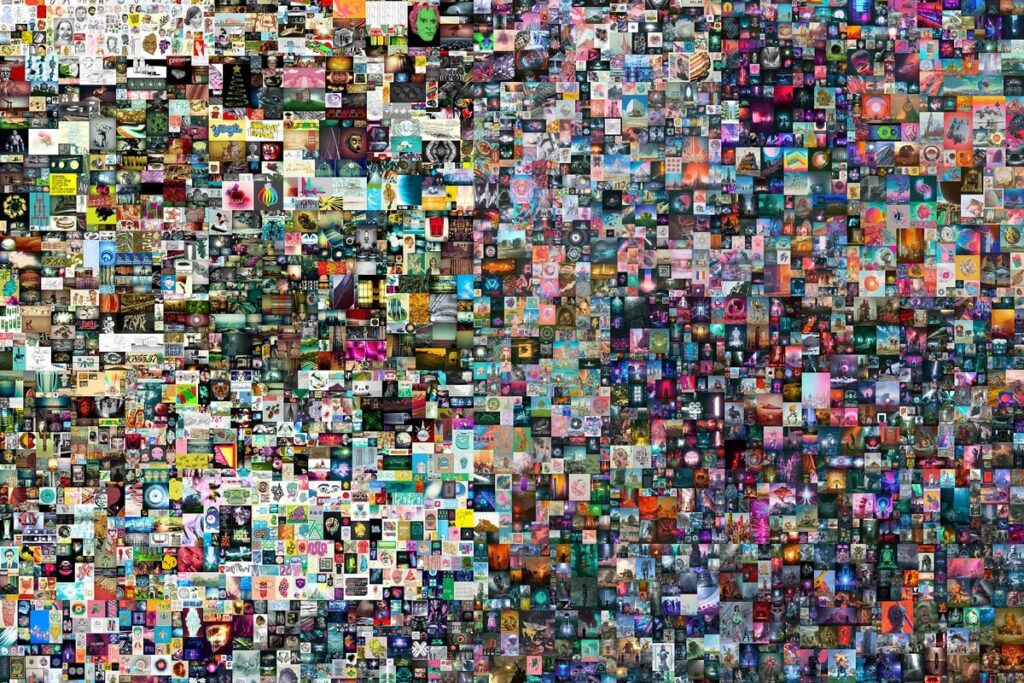
How Do I Create Digital Collectibles?
That’s where we come in.
Launchpad is your go-to solution for creating digital collectibles. Our user-friendly platform provides you with everything you need to get your project out of your head and into the world. From the smart contract setup, to generating art and metadata, to creating and managing your allowlists, we provide you with everything, even down to the mint button. With Launchpad, you have all the tools you’ll ever need to launch your dream project.
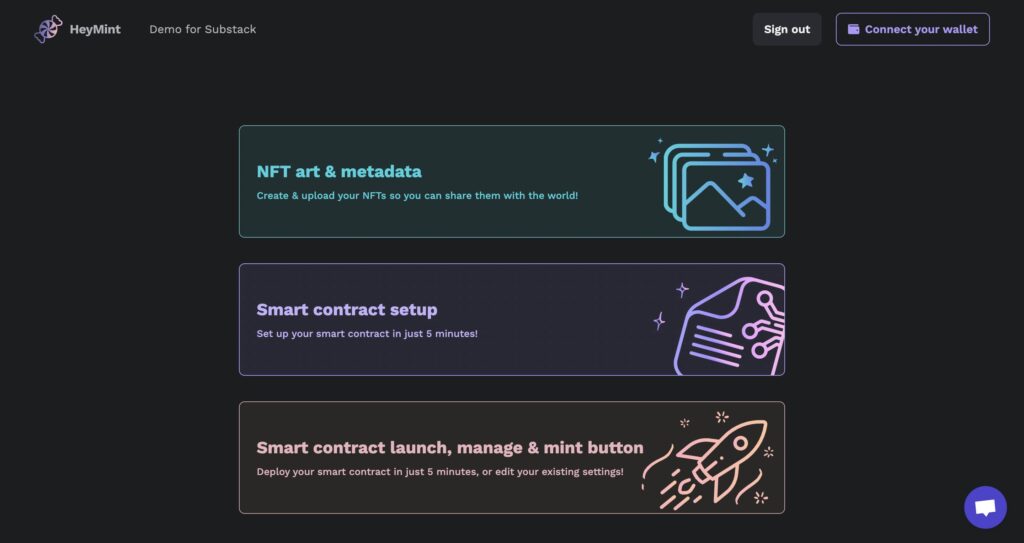
Designed for Creators
We’re so passionate about making web3 mainstream, all of the tools we build are created with simplicity in mind. We hold your hand through the entire process, and give you the option to preview and test what you’ve built before publicly launching. Despite the process being so simple, the contracts you can generate are just as robust as the ones used by massive projects.
Generate Your Artwork
Creating your own collection of digital collectibles has never been easier thanks to our NFT art generator. Simply upload your layers, arrange them in the desired order, and specify the rarity of certain traits. With just a few clicks, your artwork will be uploaded to decentralized file storage and ready for minting. The process is quick and straightforward, allowing you to focus on what matters most – your art.
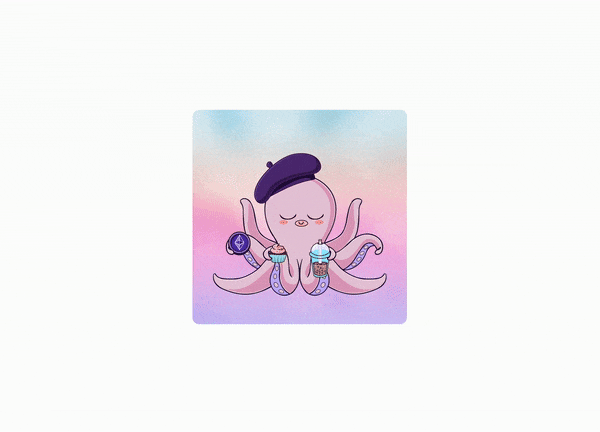
Customize Your Smart Contract
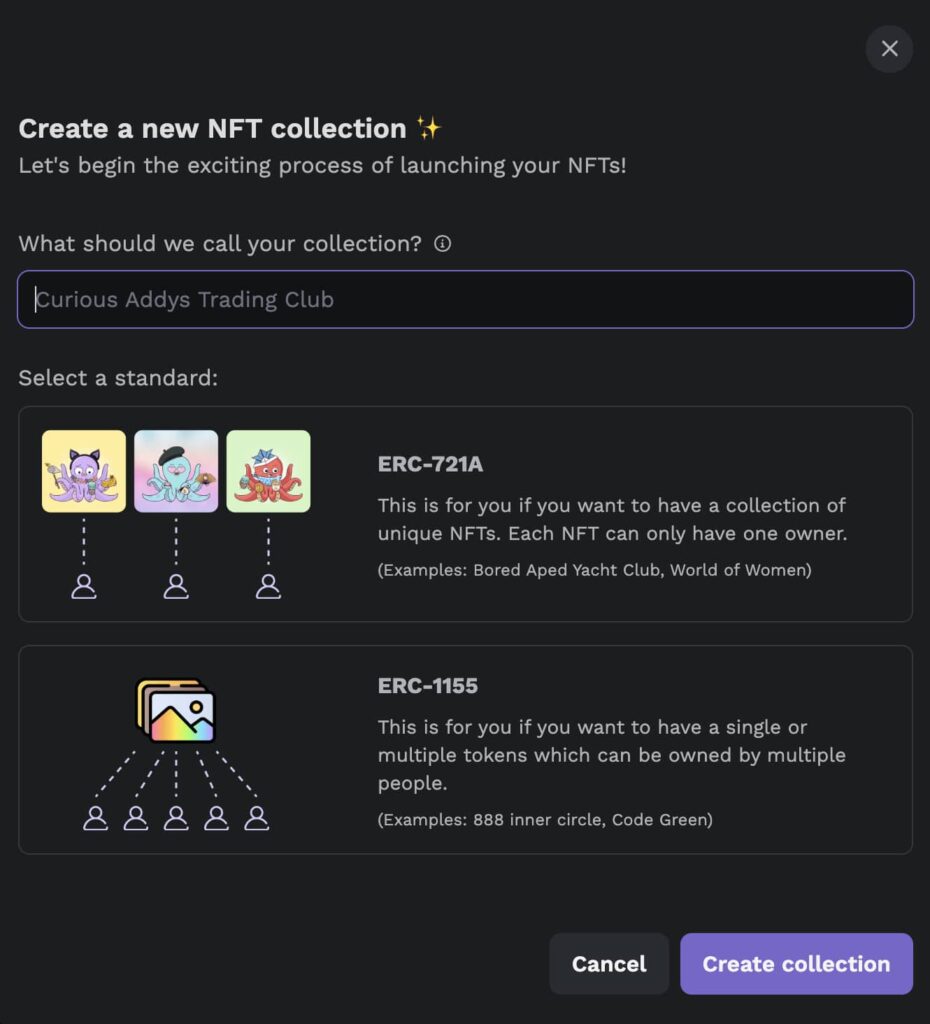
Our intuitive platform makes it unbelievably easy to design the smart contract you need. In just a few minutes, you can set up all the details for your presale, public sale, and more! Once you are ready, just hit a button and we will generate your custom smart contract in mere seconds.
Turn Any Web Page Into a Minting Website
Customize your mint button to look how you wish, and embed it onto your own website. It’s as simple as copying and pasting a few lines of code. Our code snippet is compatible with platforms like Squarespace, Wix, Webflow, and WordPress. We make it simple to add minting functionality to your existing website.
Premium Features at Your Fingertips
In addition to our core features, we offer a range of premium options, including: marketplace blocklisting, soulbinding, staking, refunding, loaning, free claims, and burn to mint. Our development team is constantly working to add even more features to our platform, ensuring you have all the tools you need to bring your collection to life.
And there you have it, the ultimate guide to digital collectibles! If you’ve made it all this way, give yourself a pat on the back; thanks for staying with us! If you’d like a little more of us in your life, you can follow us on Twitter, or join our Discord. If you’re ready to start your own collection, we’ll see you over at Launchpad!
Take care!
Further Reading

NFT Scams: 10 Types You Need to Know
How Much Does It Cost to Make an NFT?
NFT Art: 7 Reasons Why You Should Make It
How to Create Soulbound Tokens With Launchpad
NFT Terminology: Your Destination for Confusing Crypto Language!
